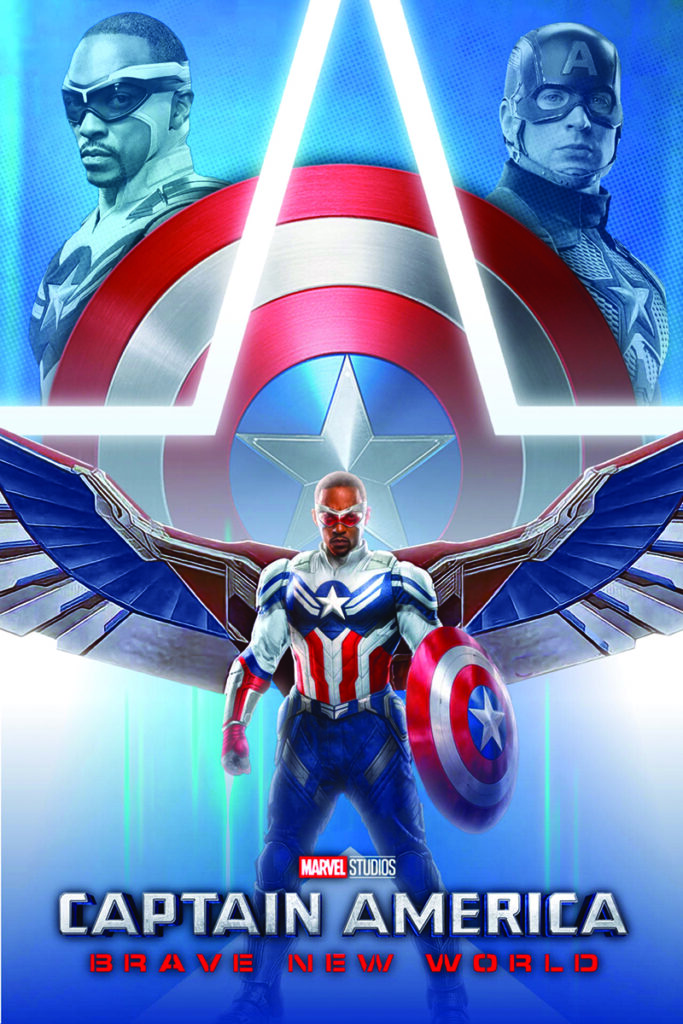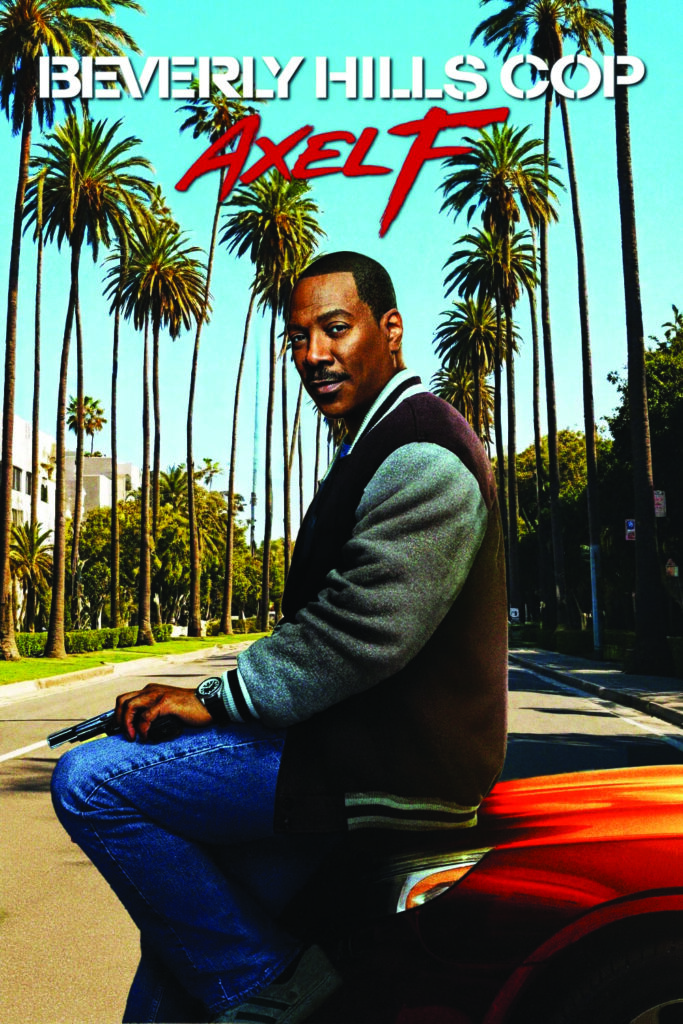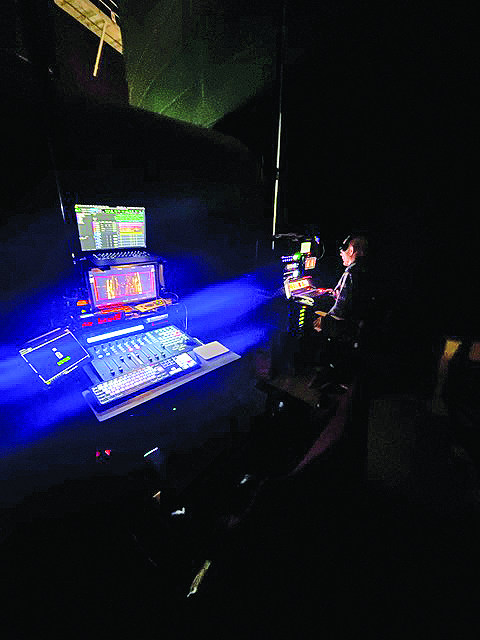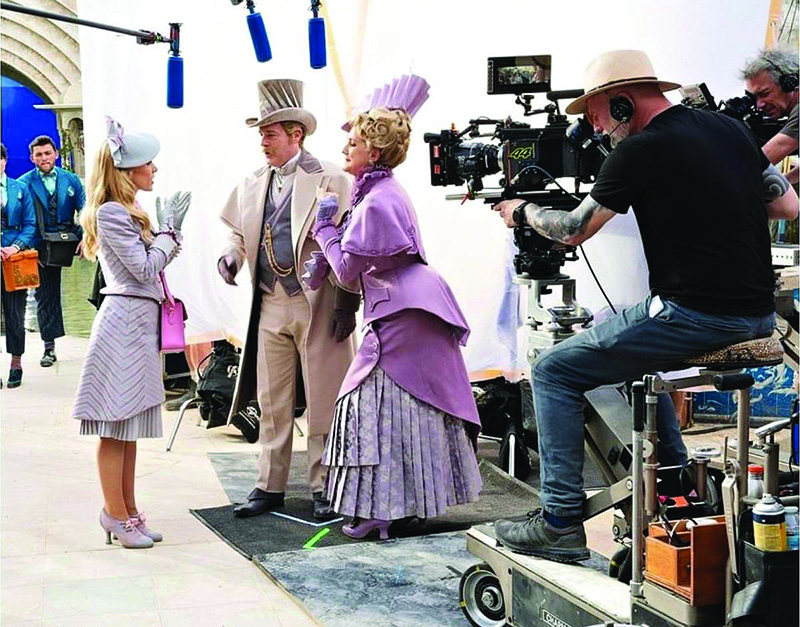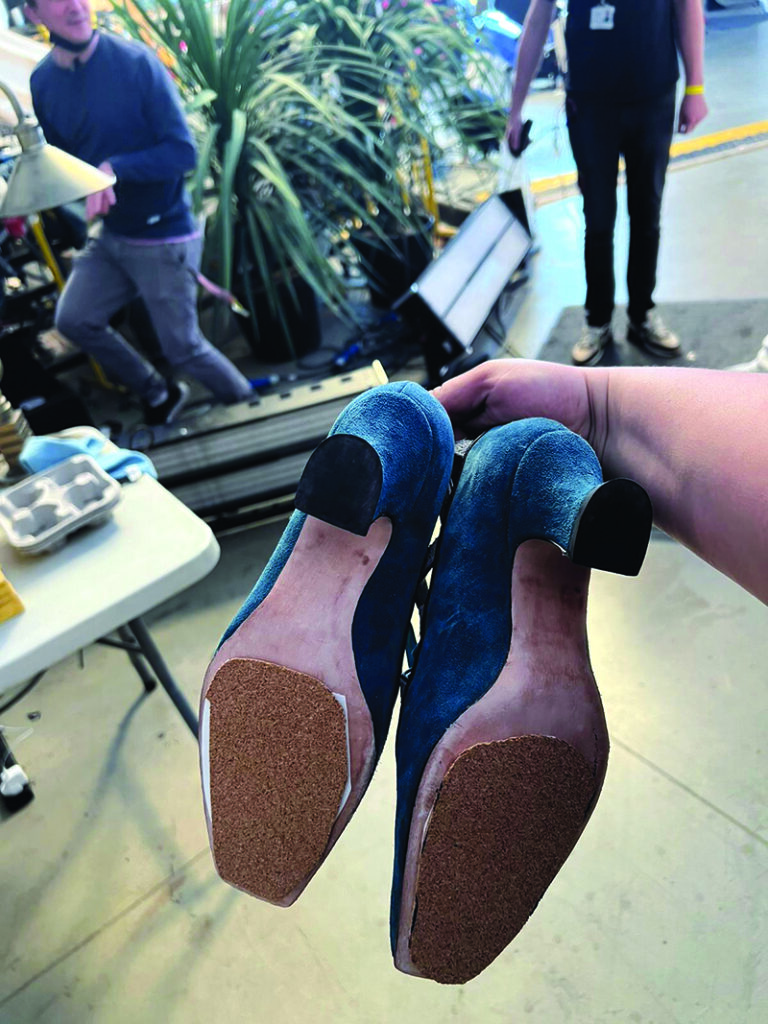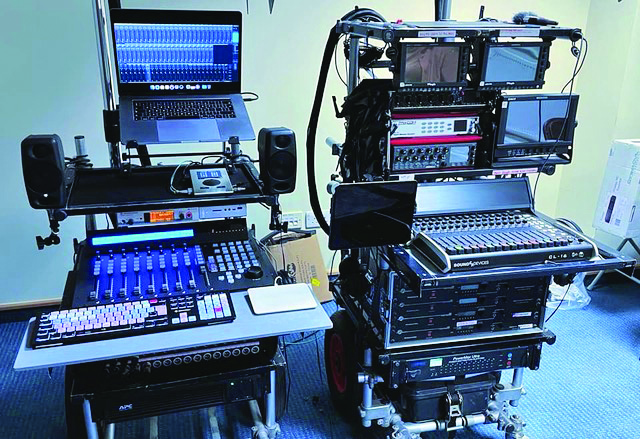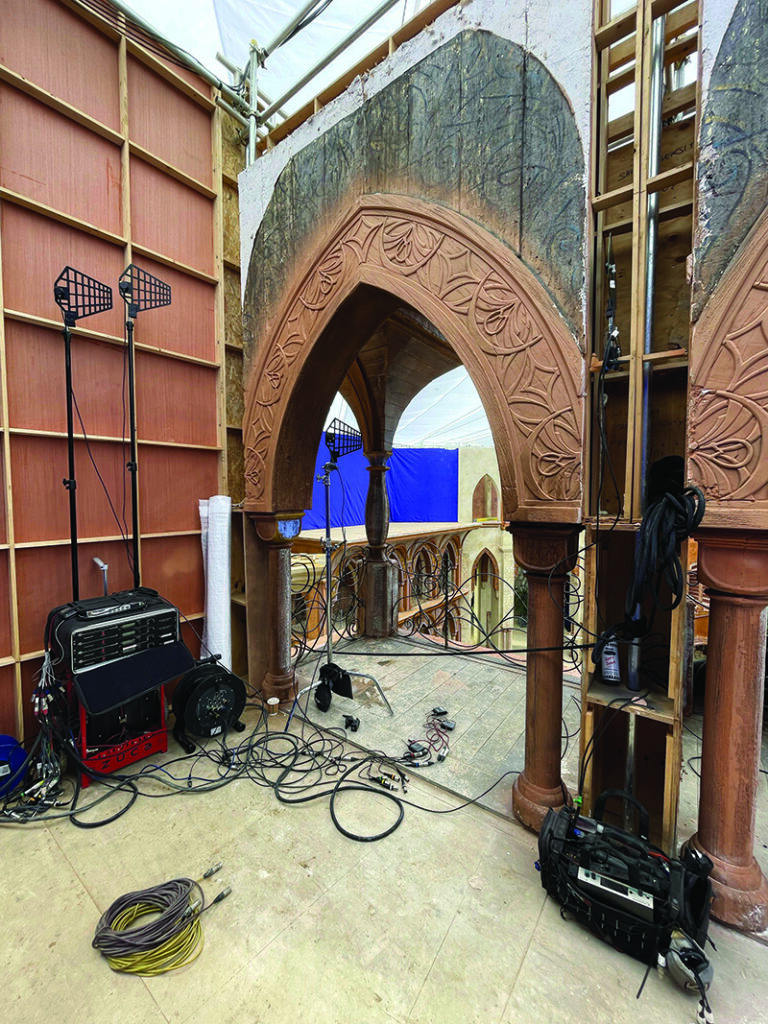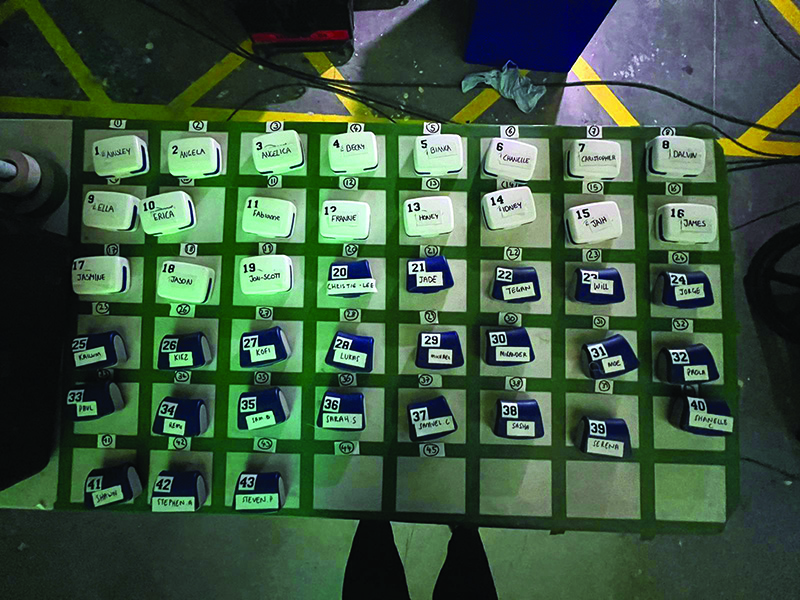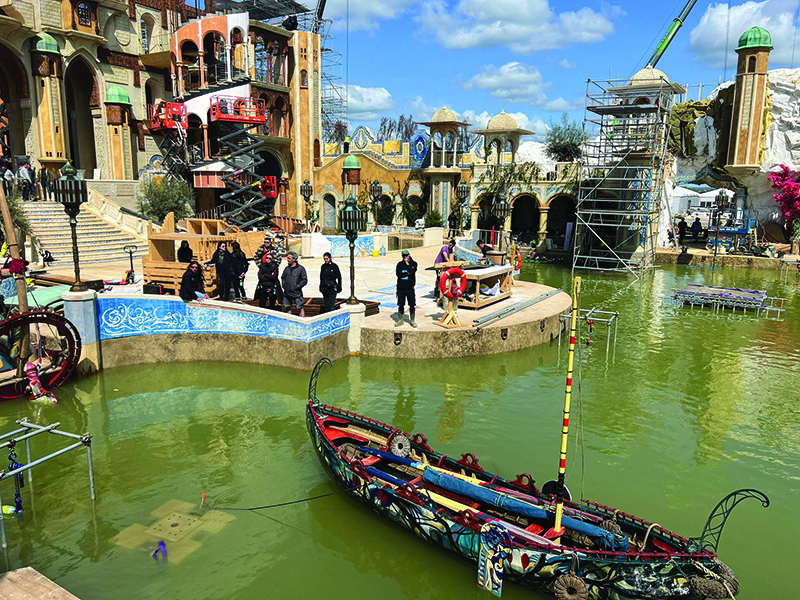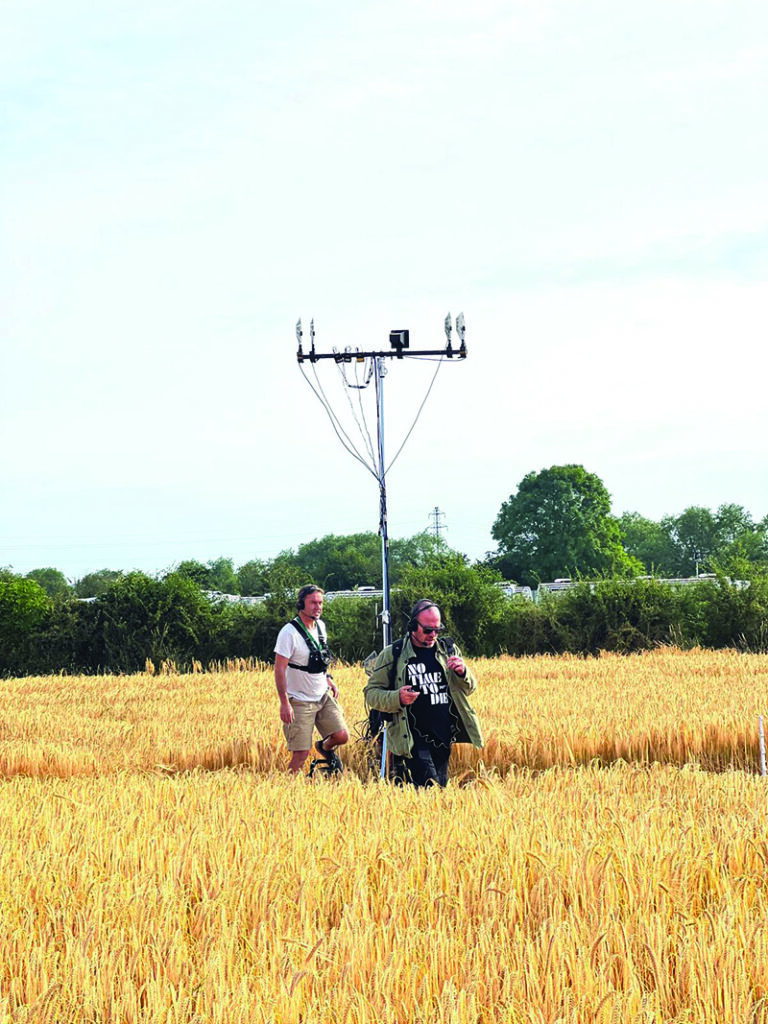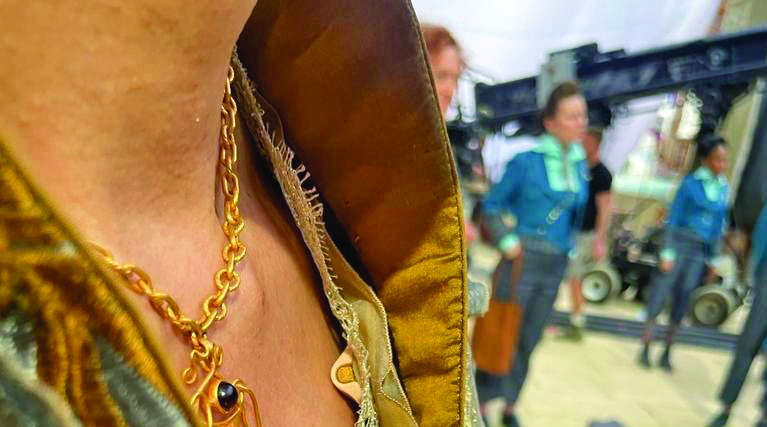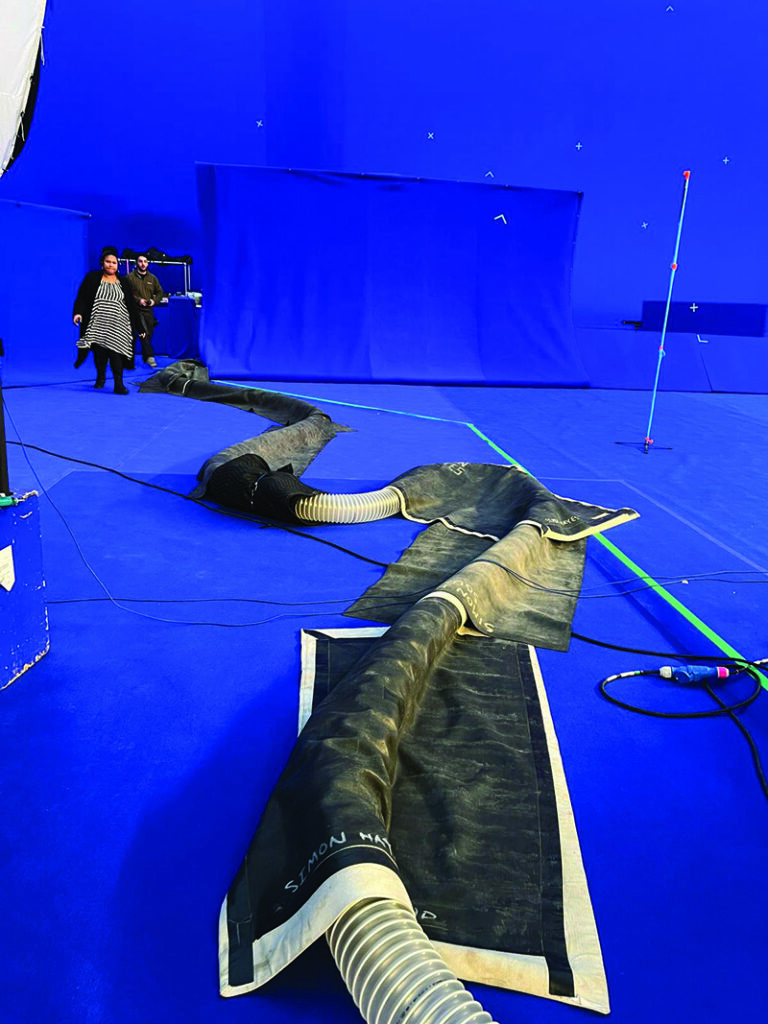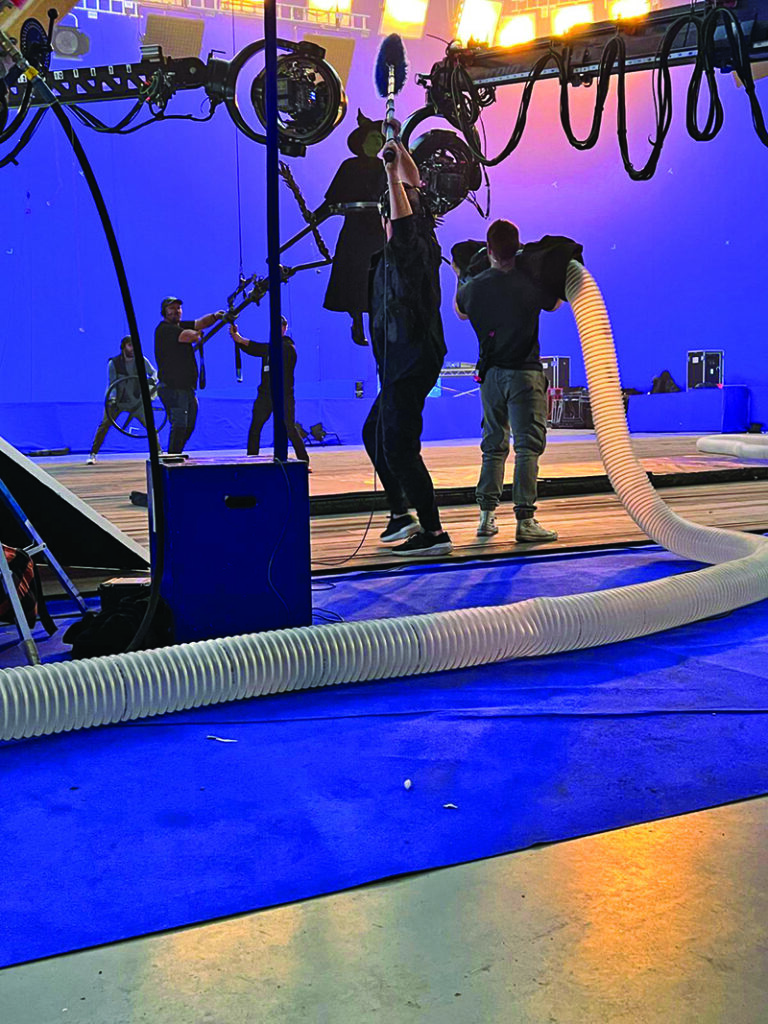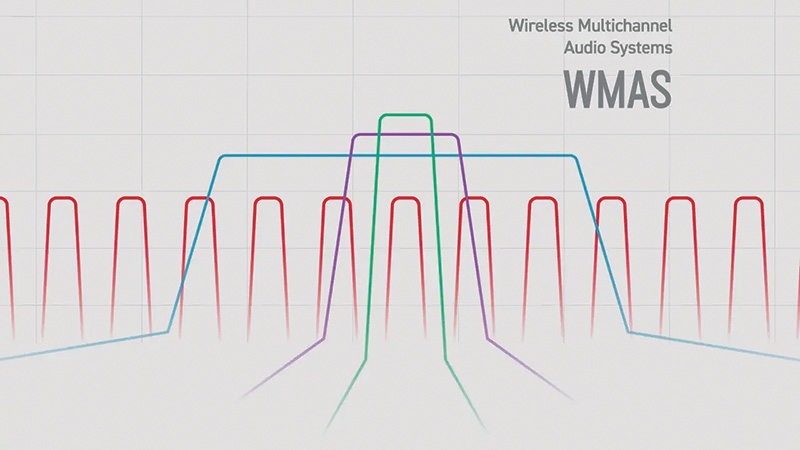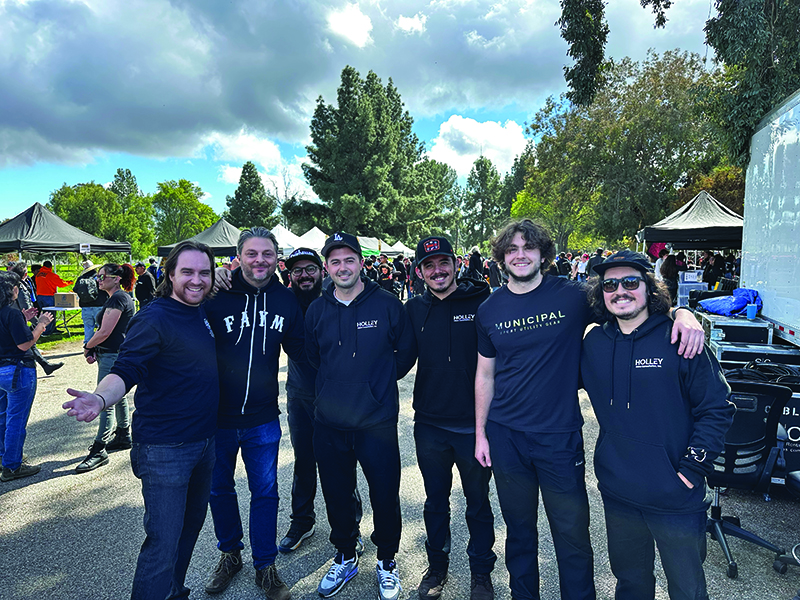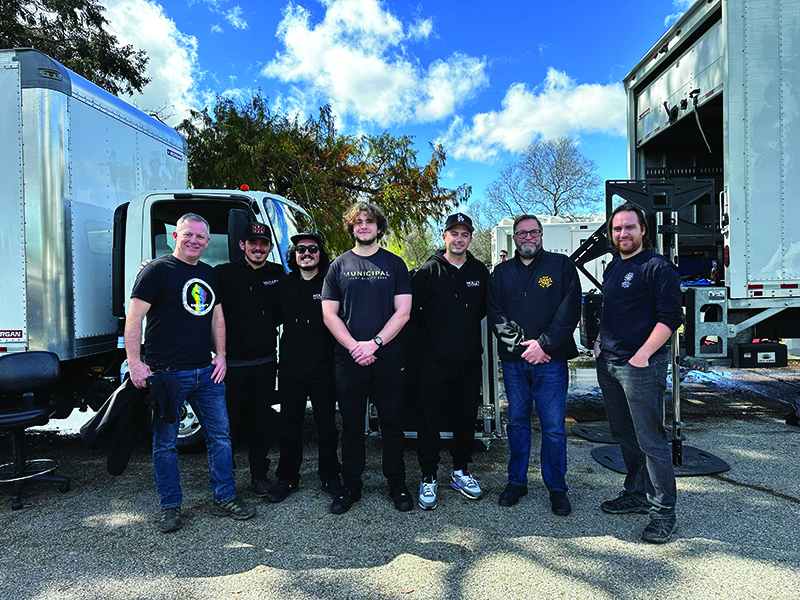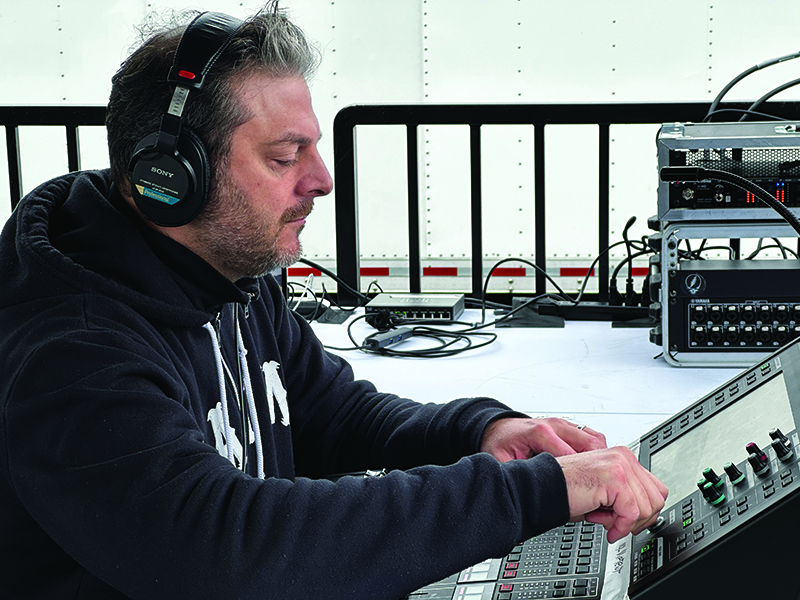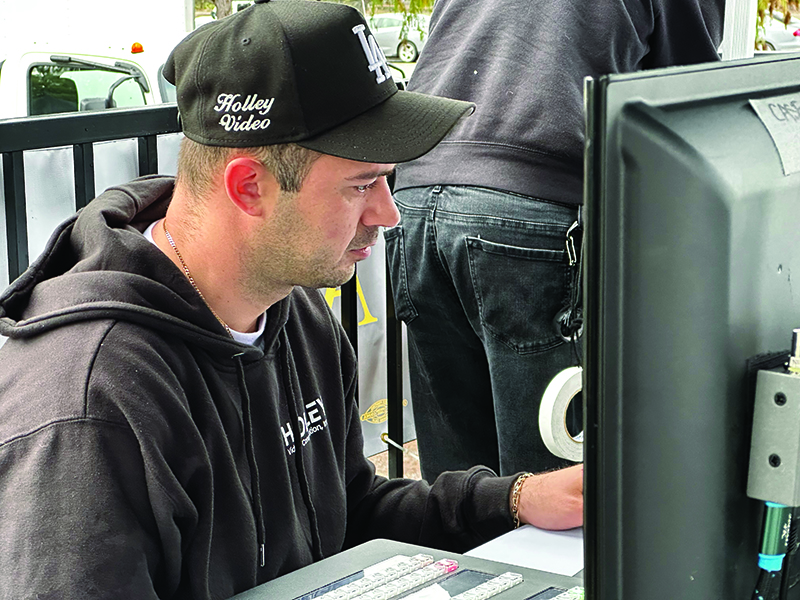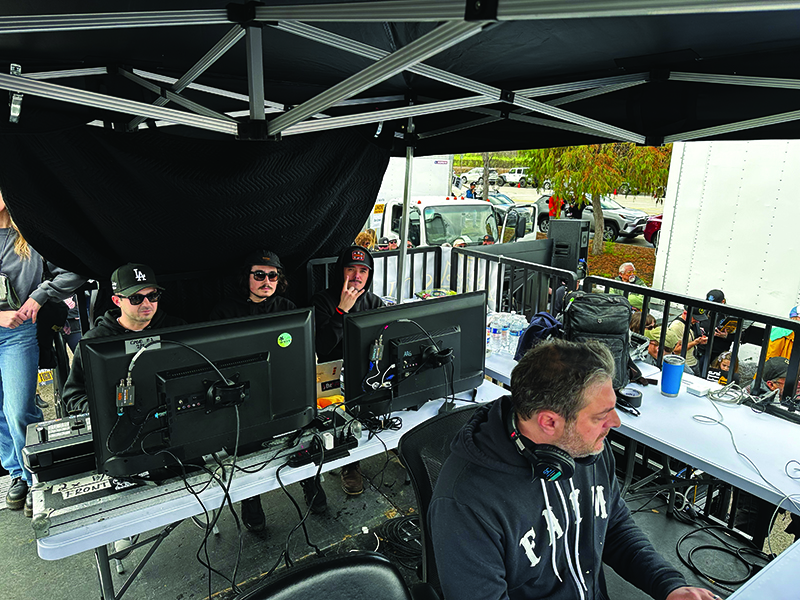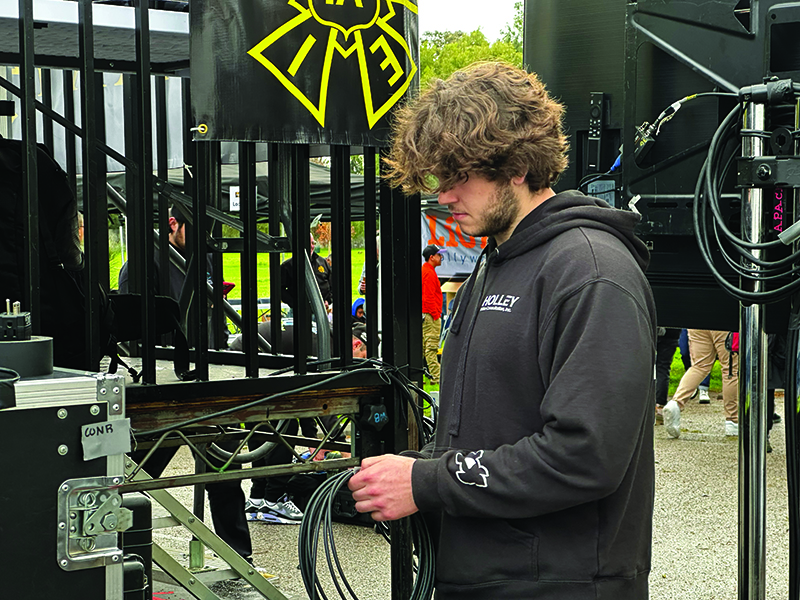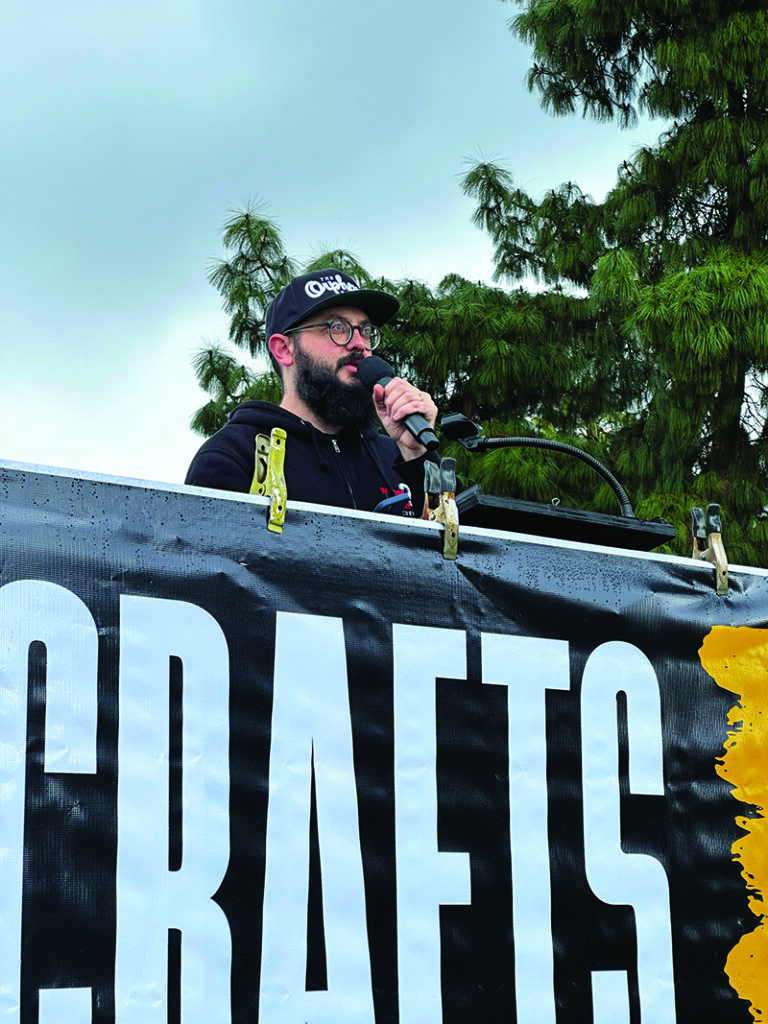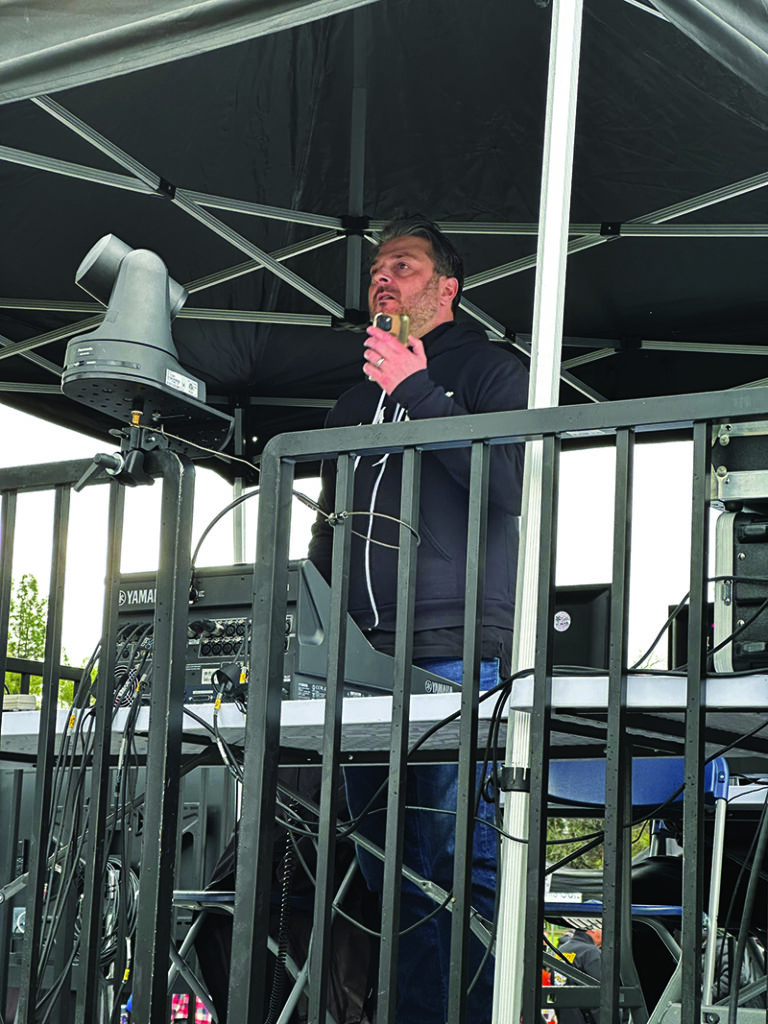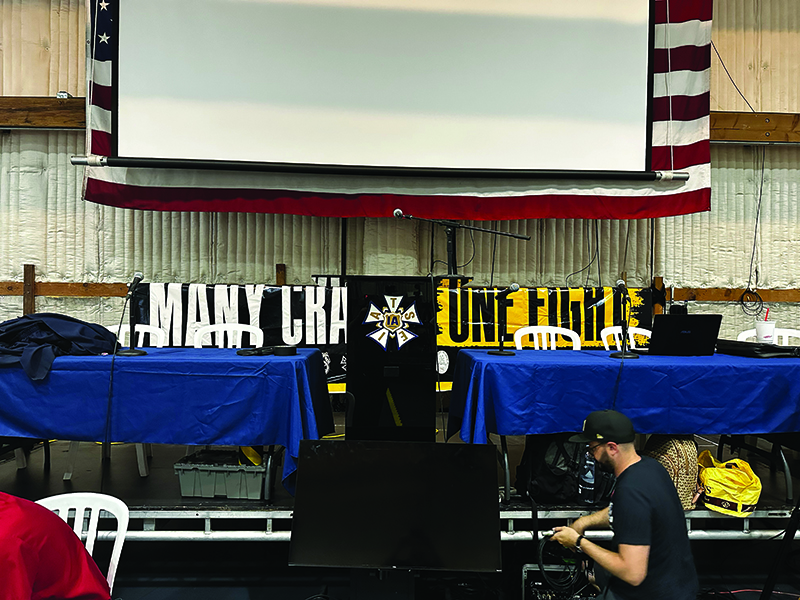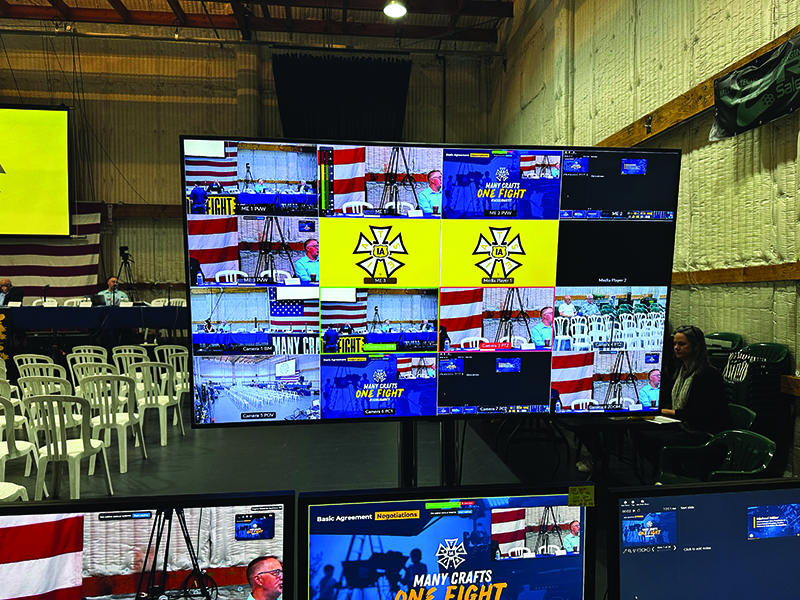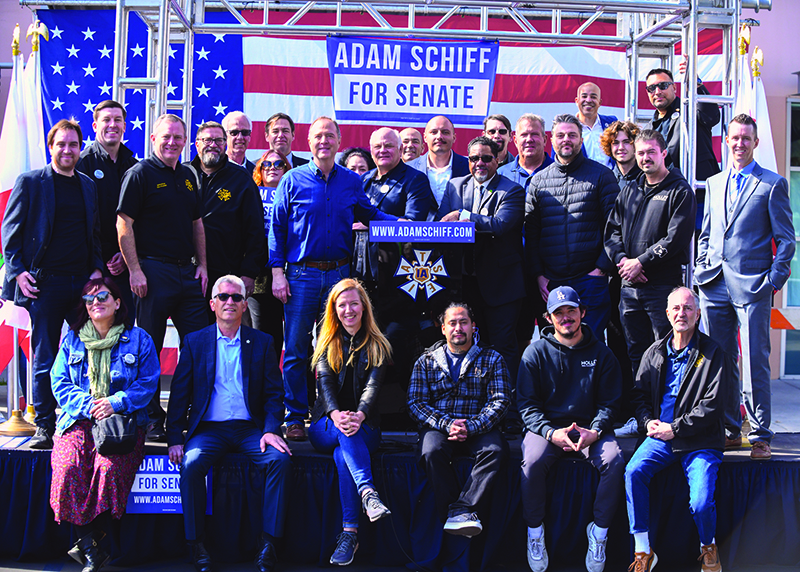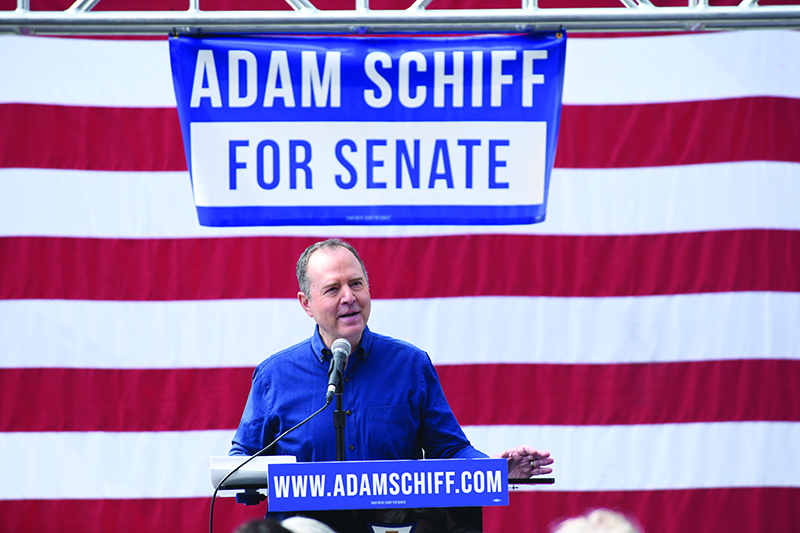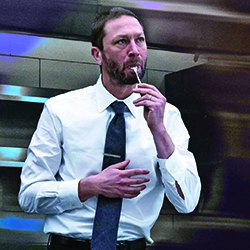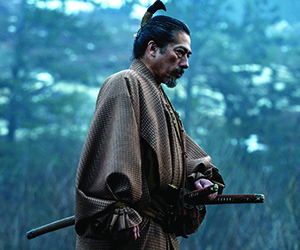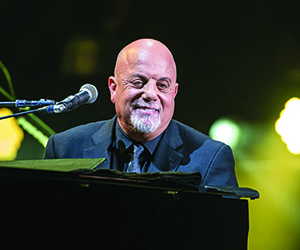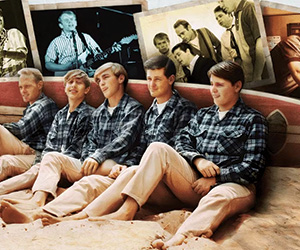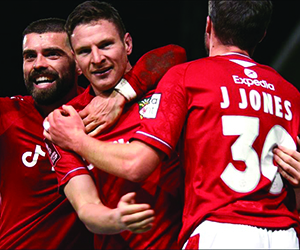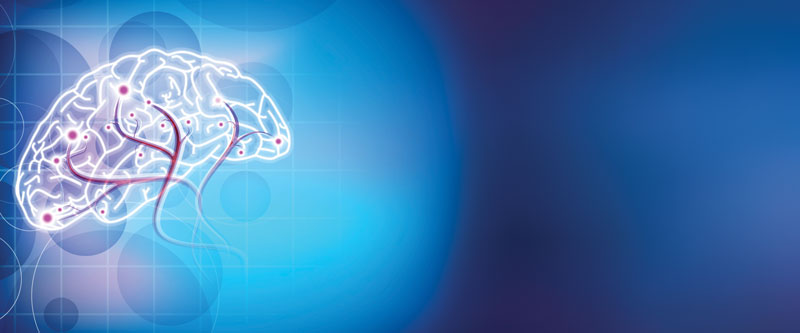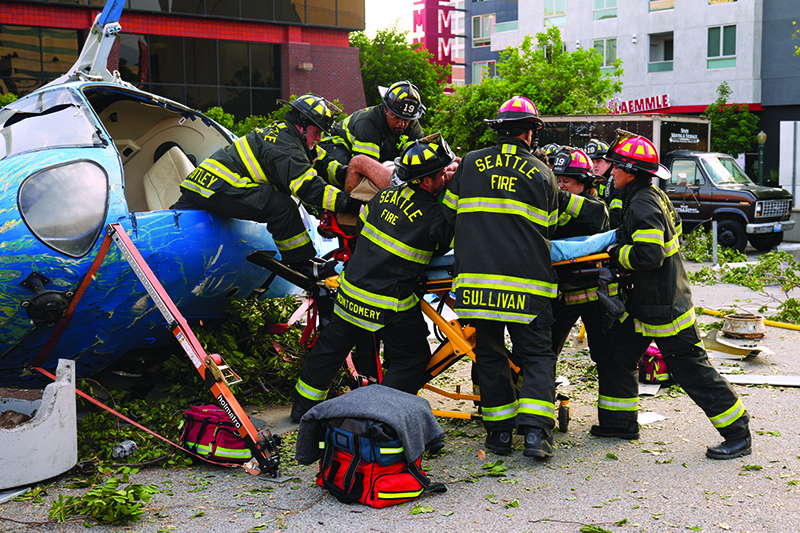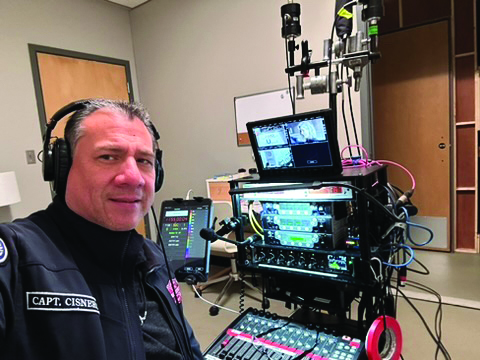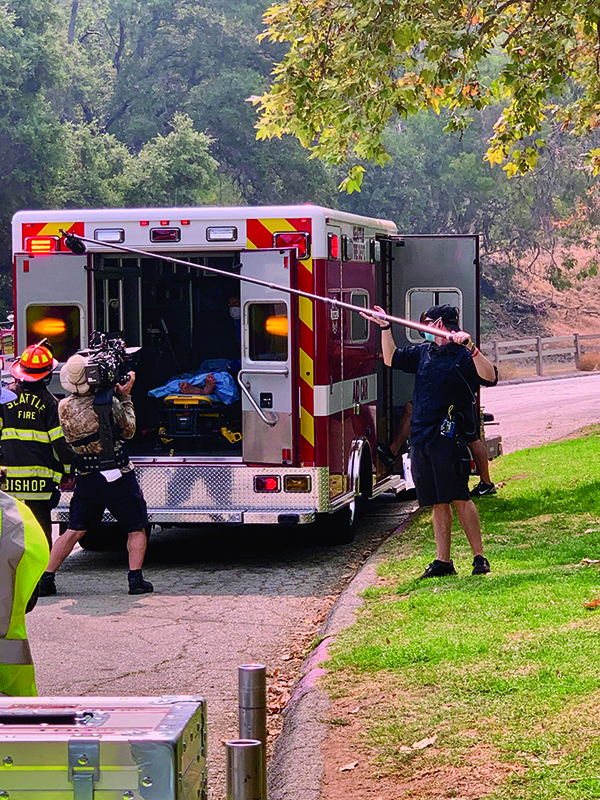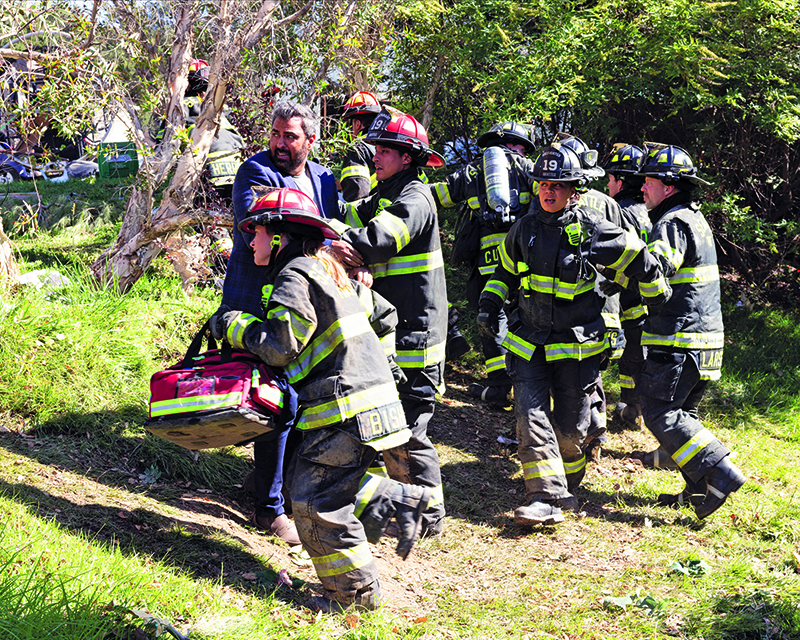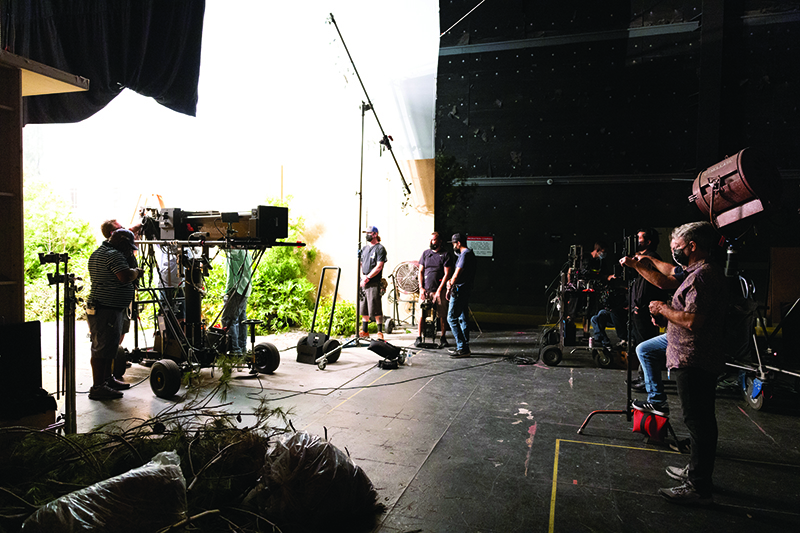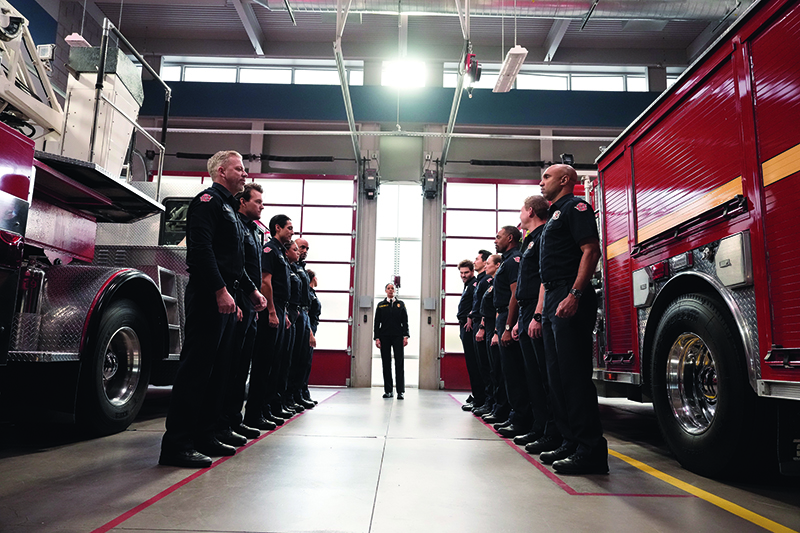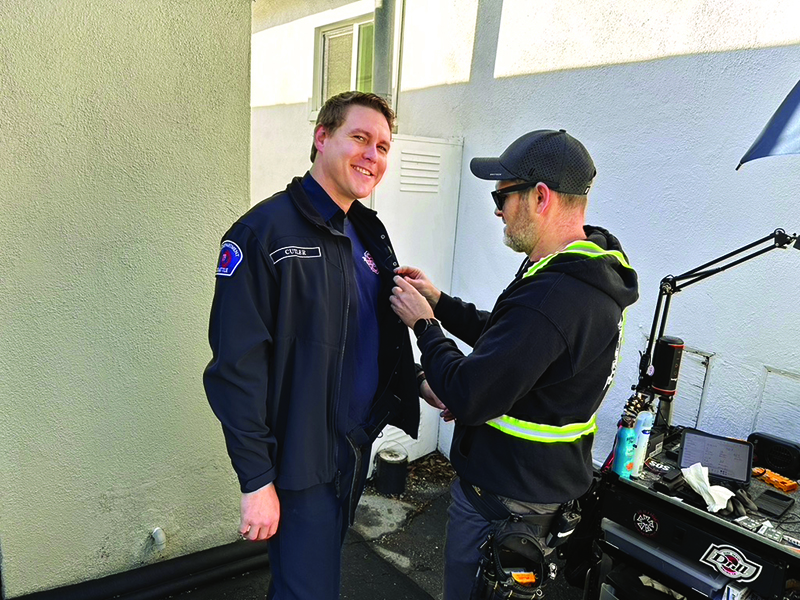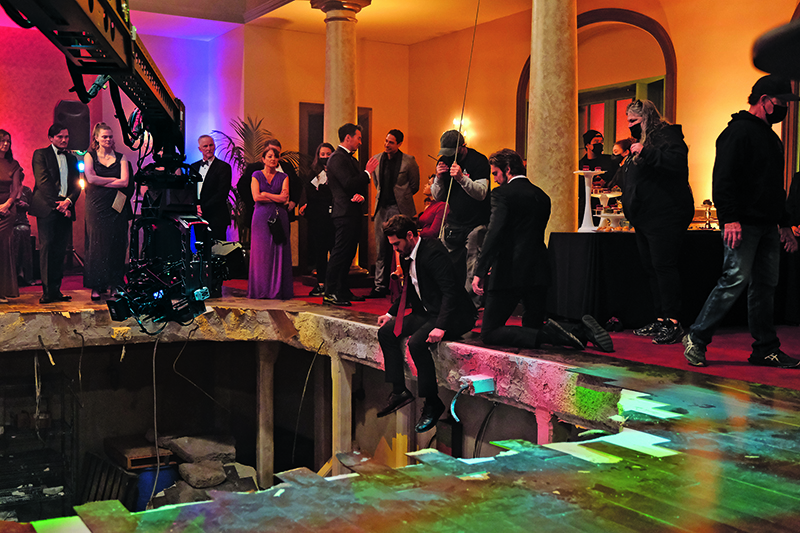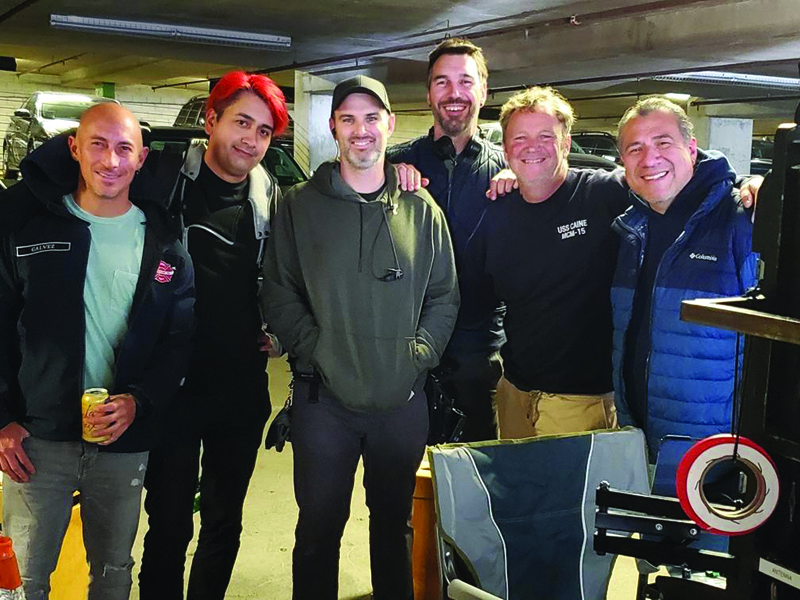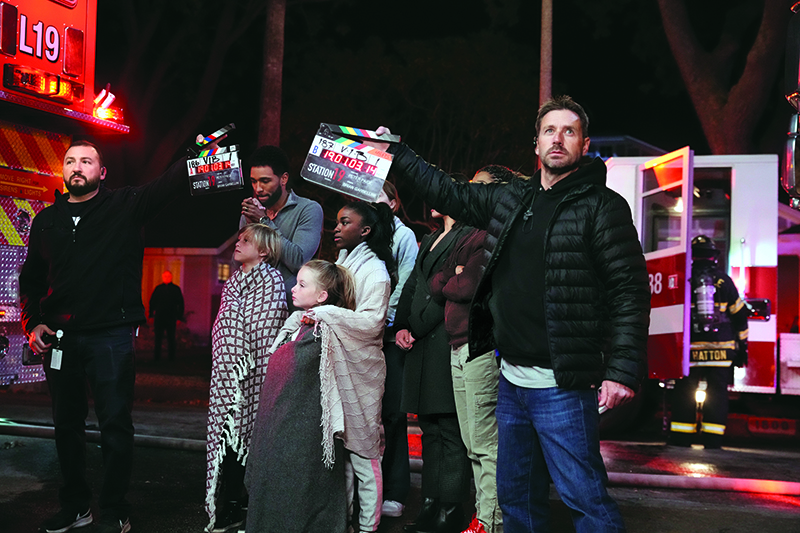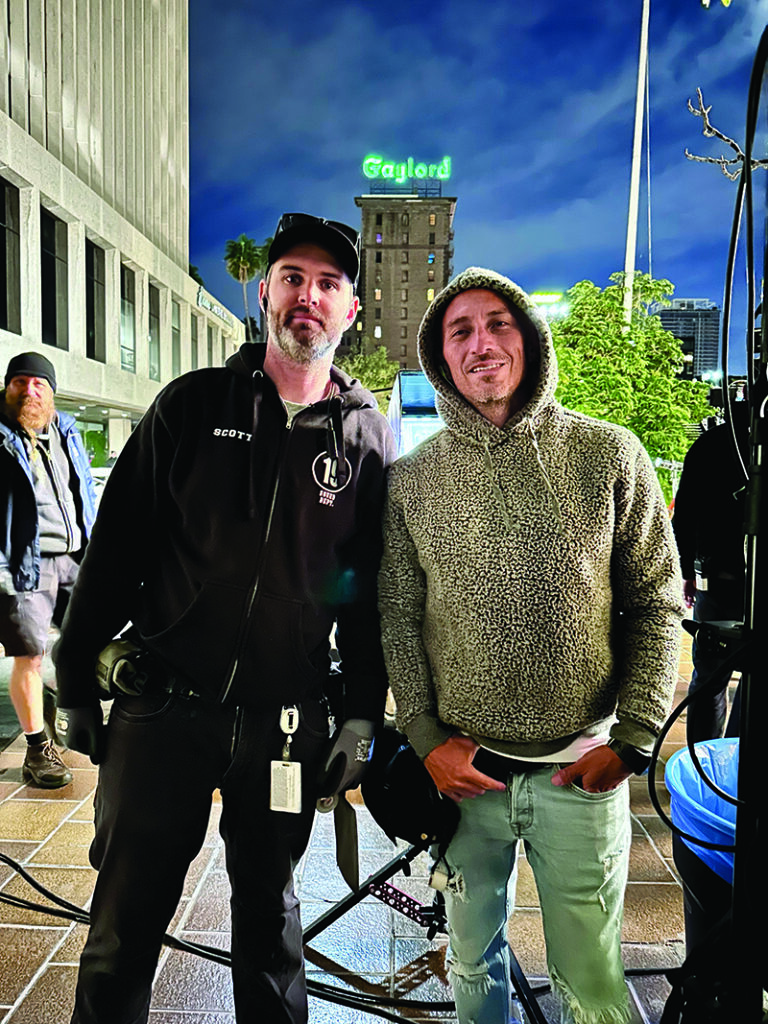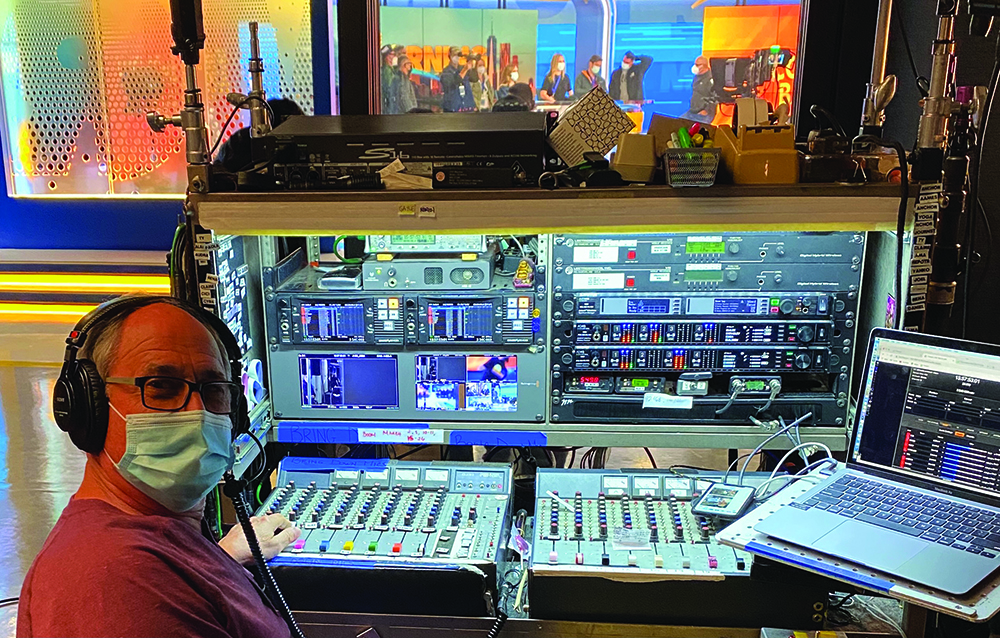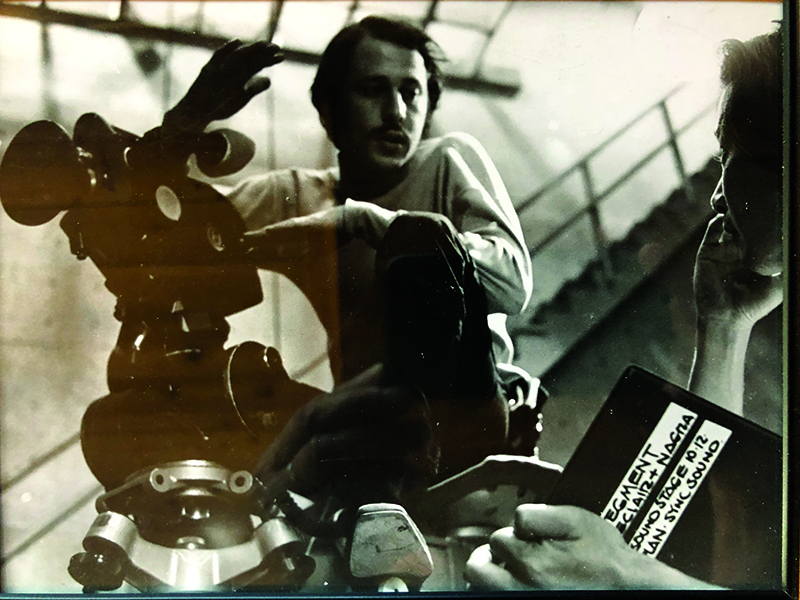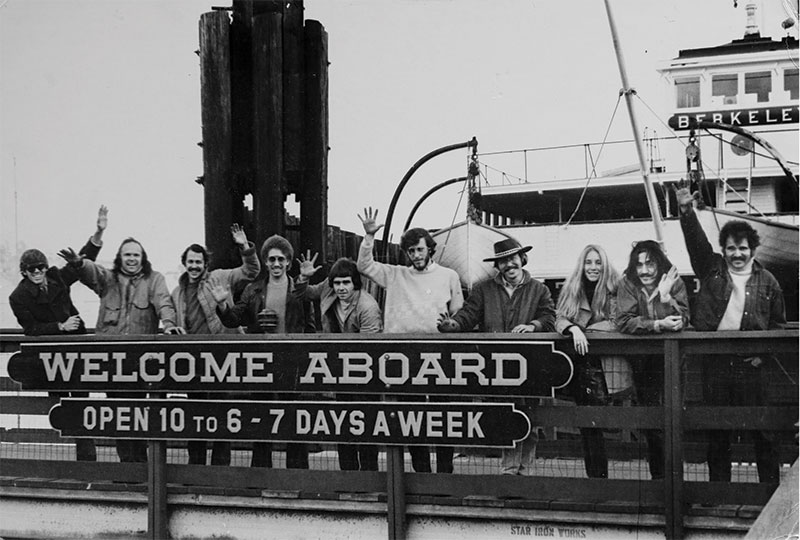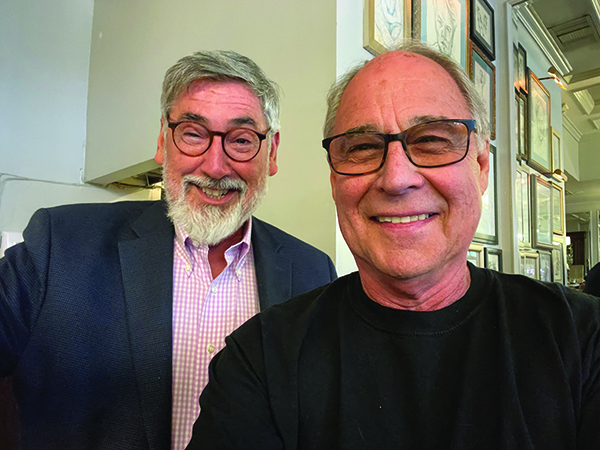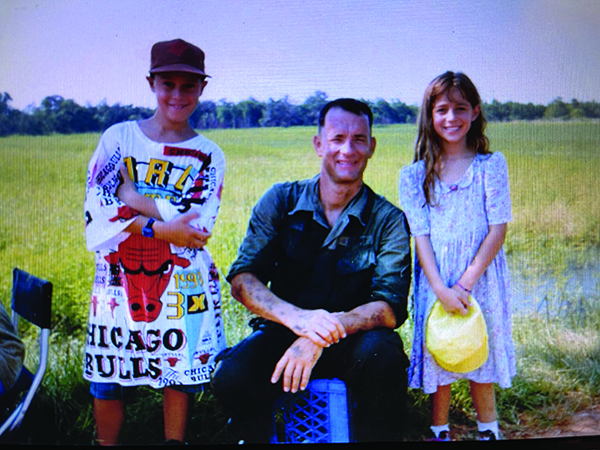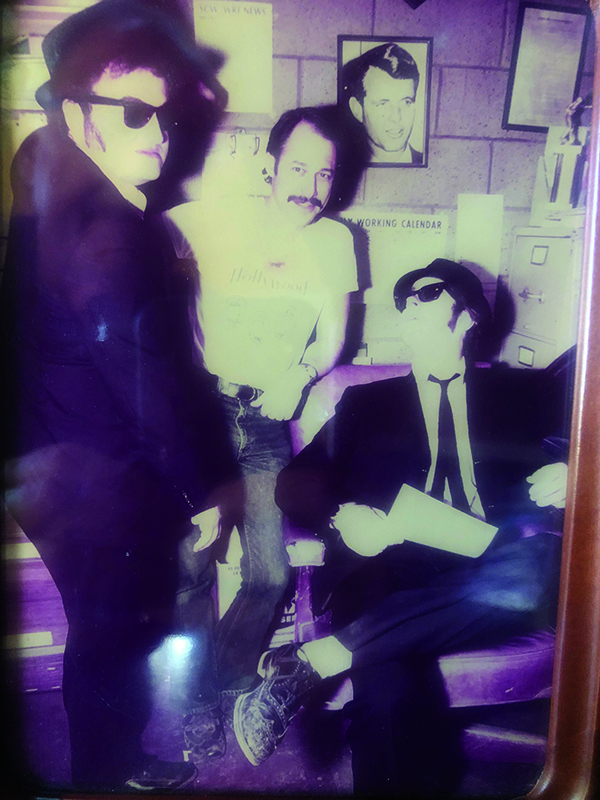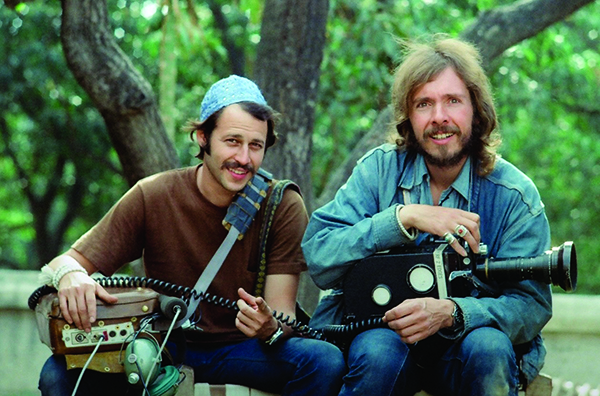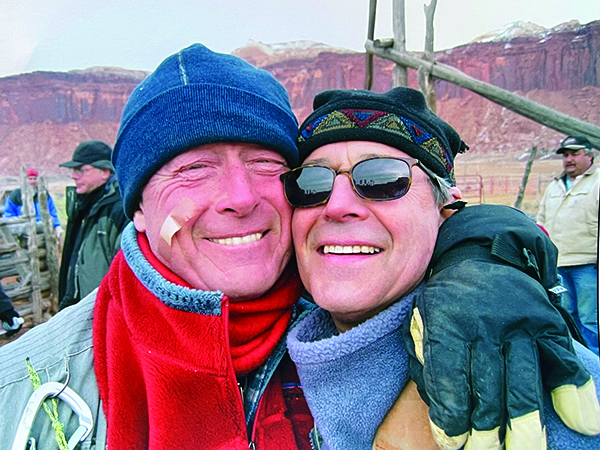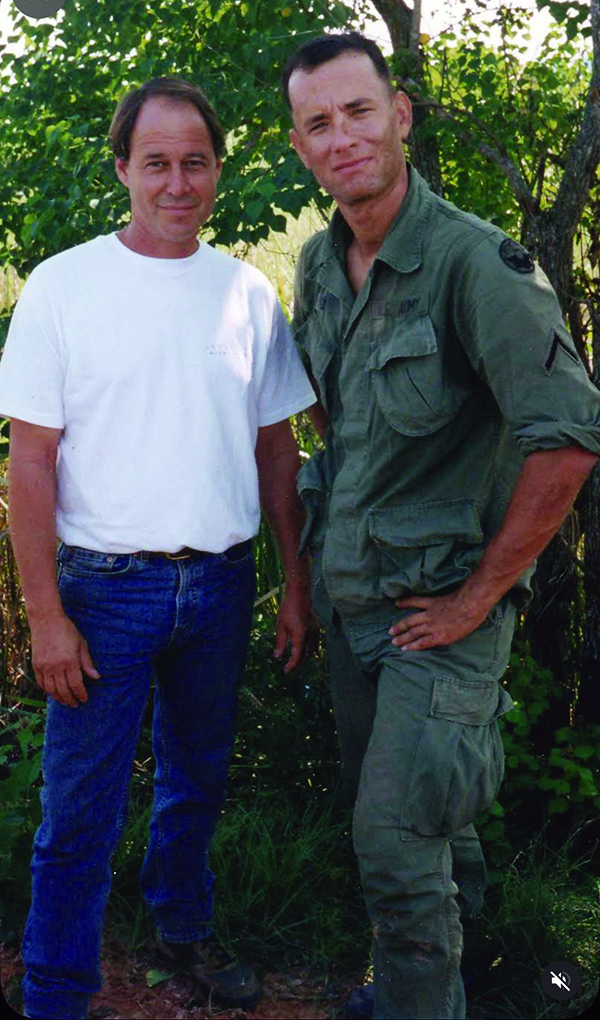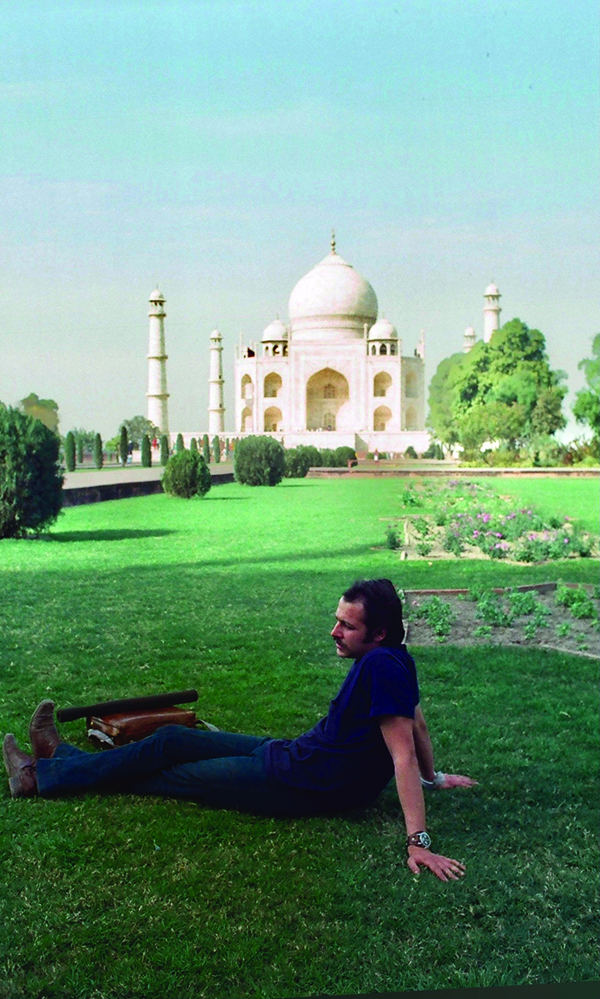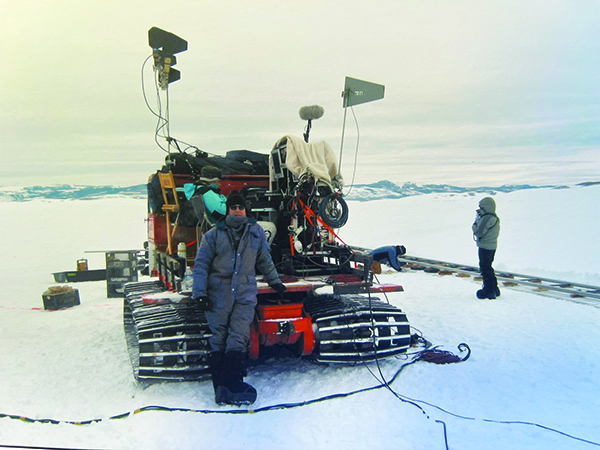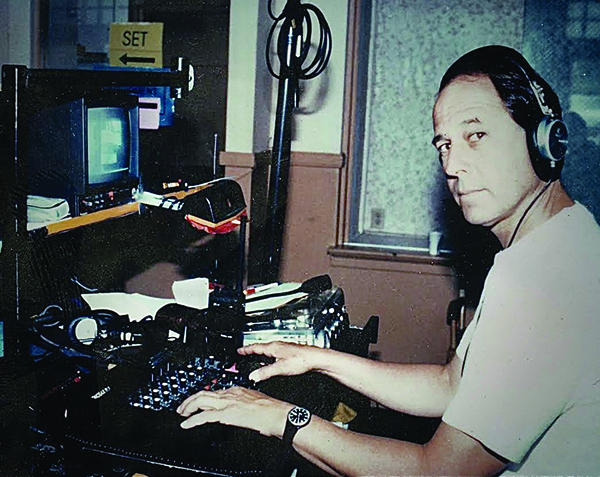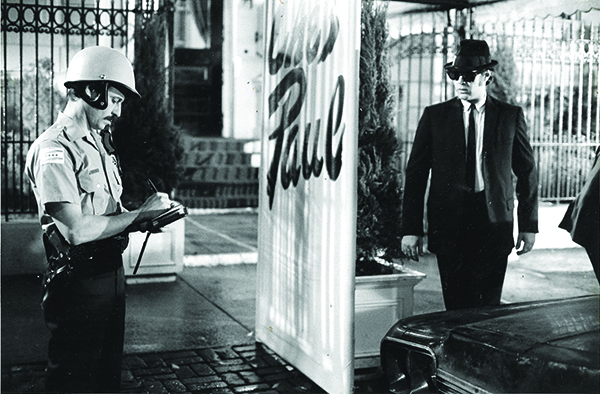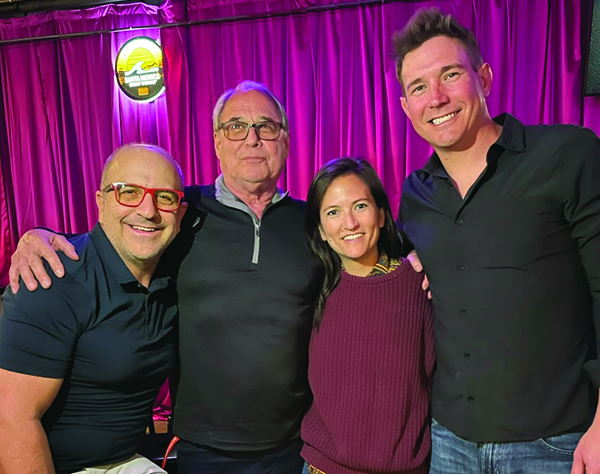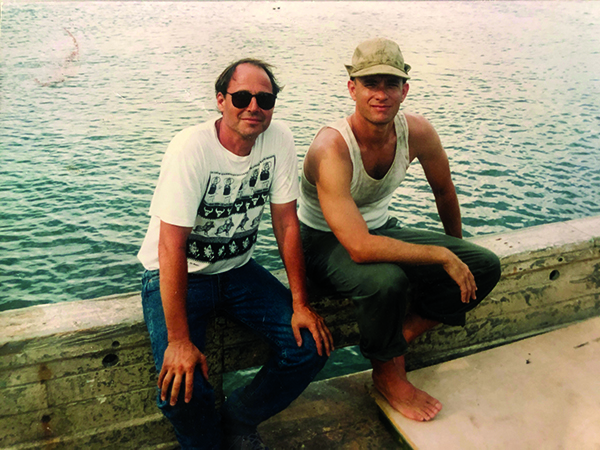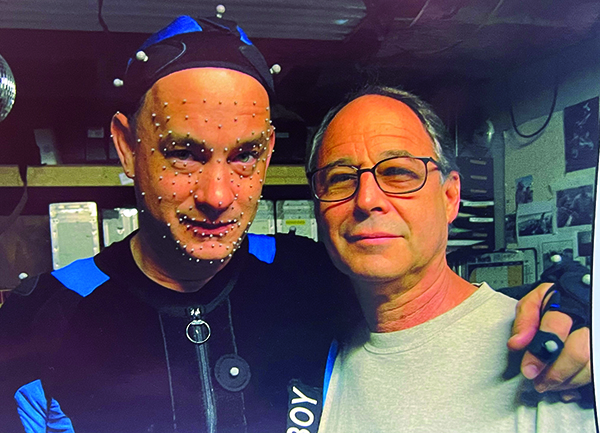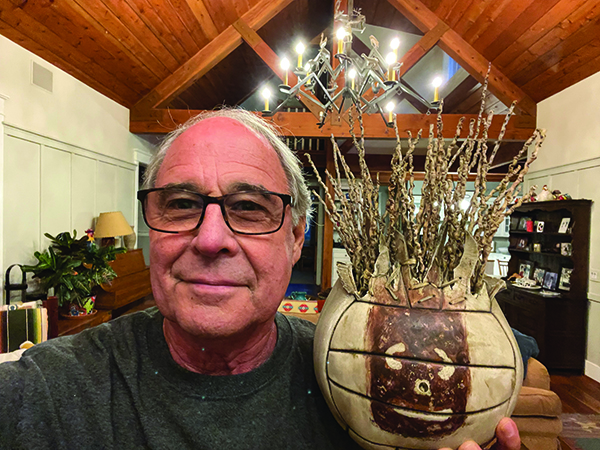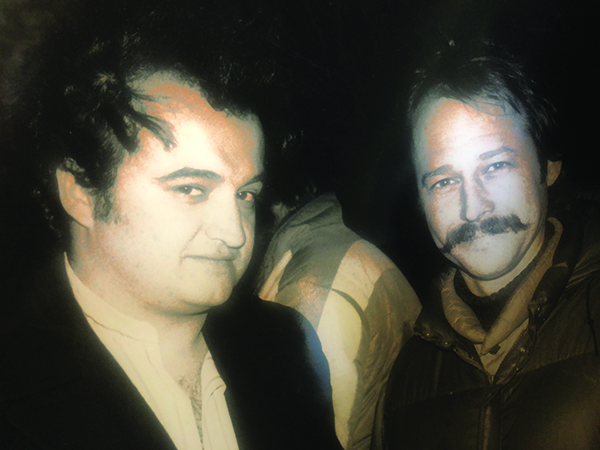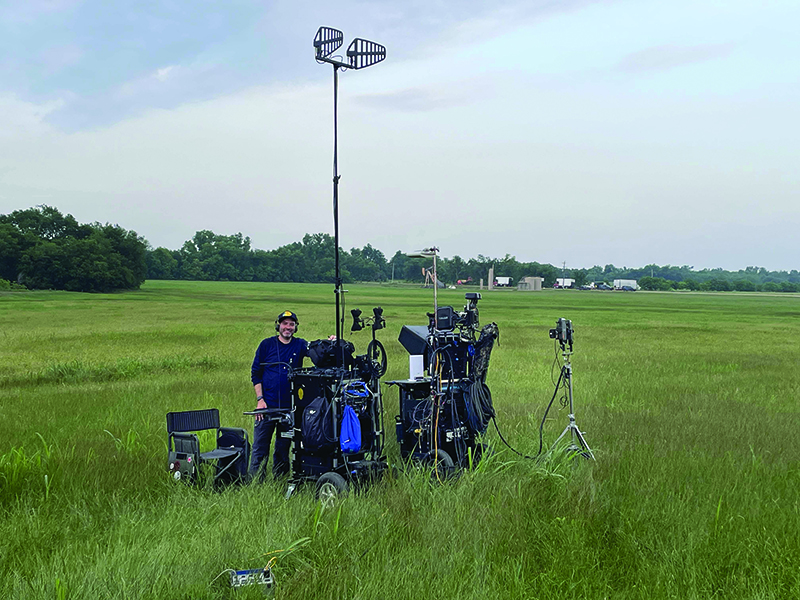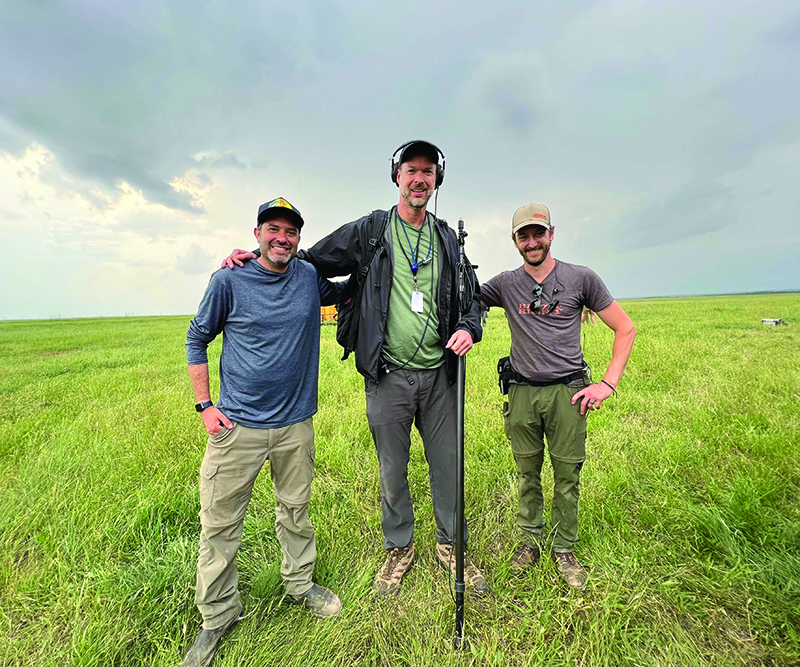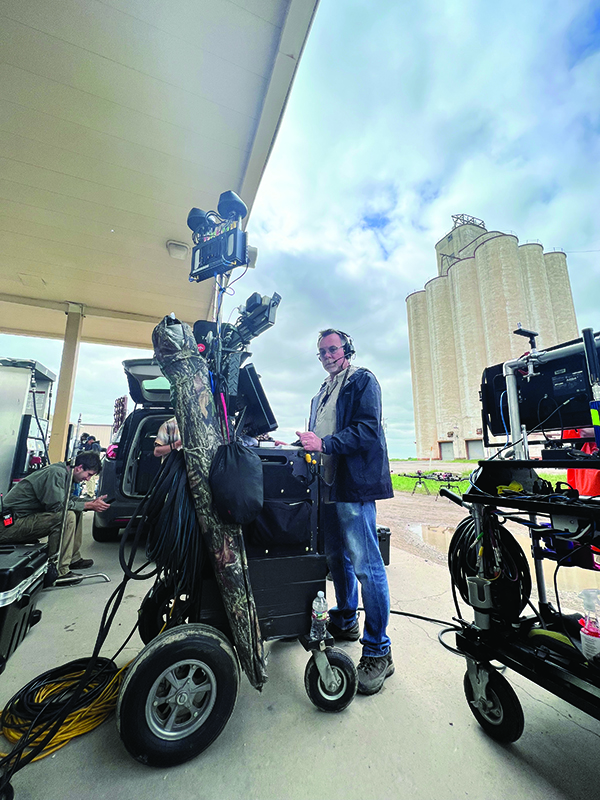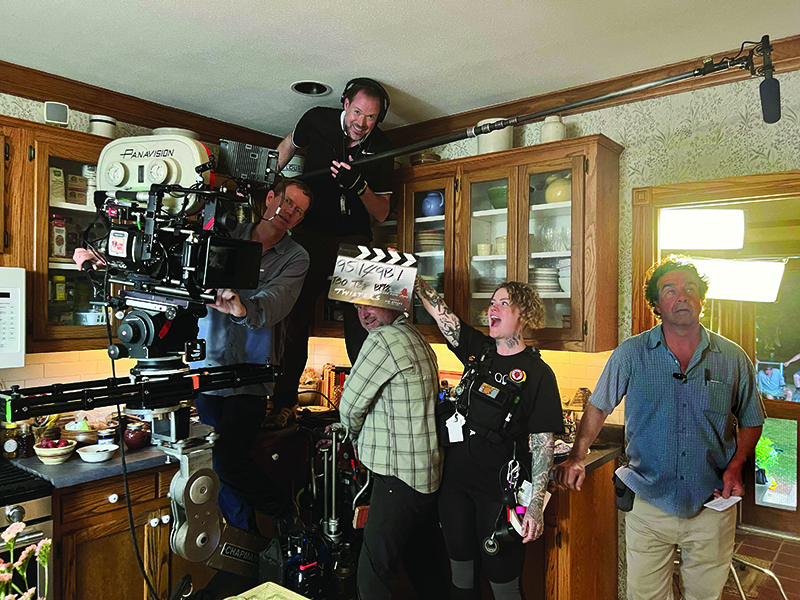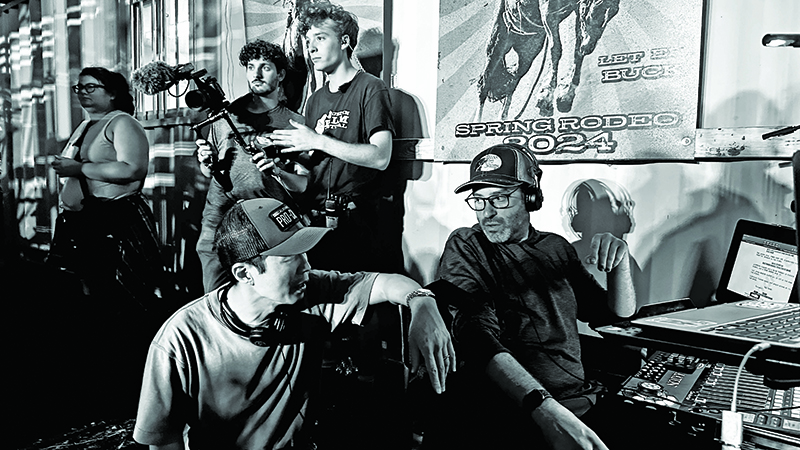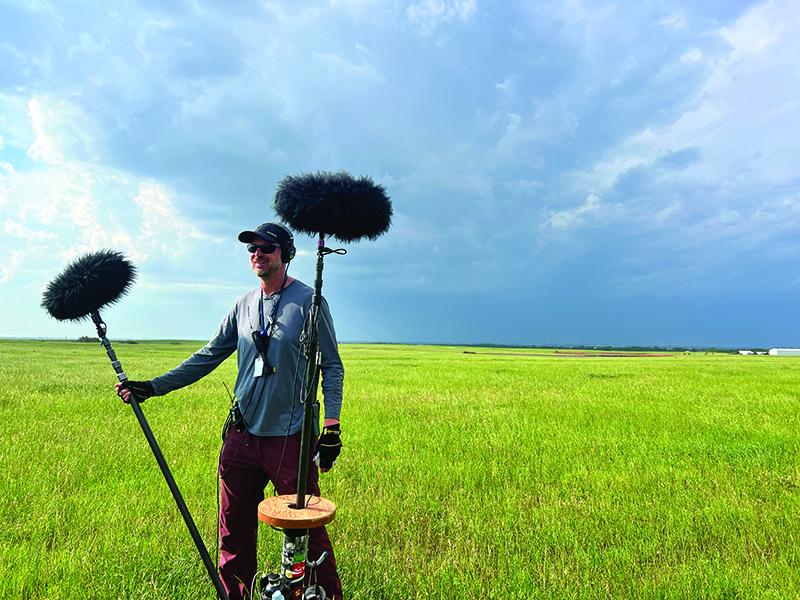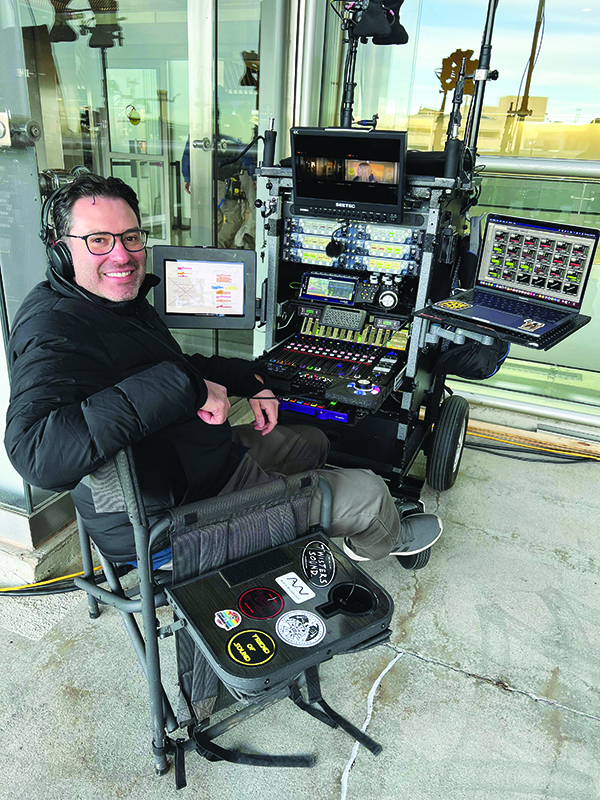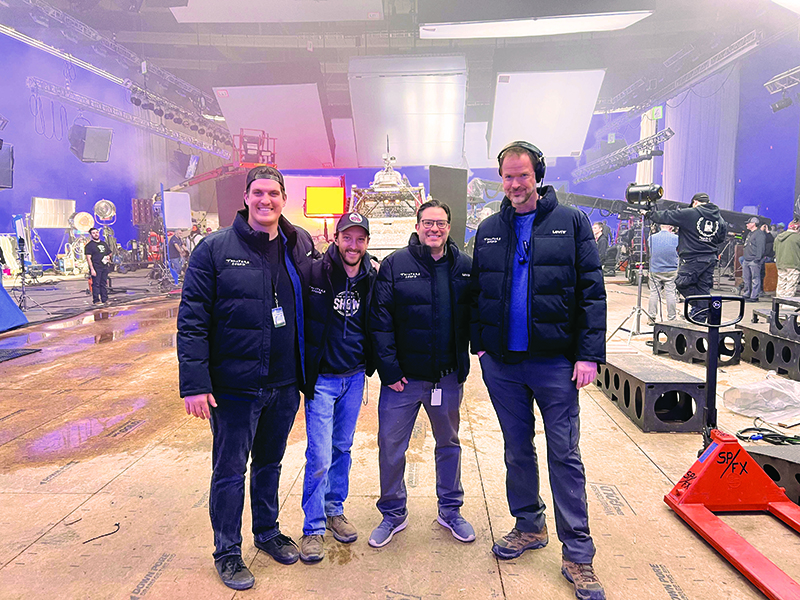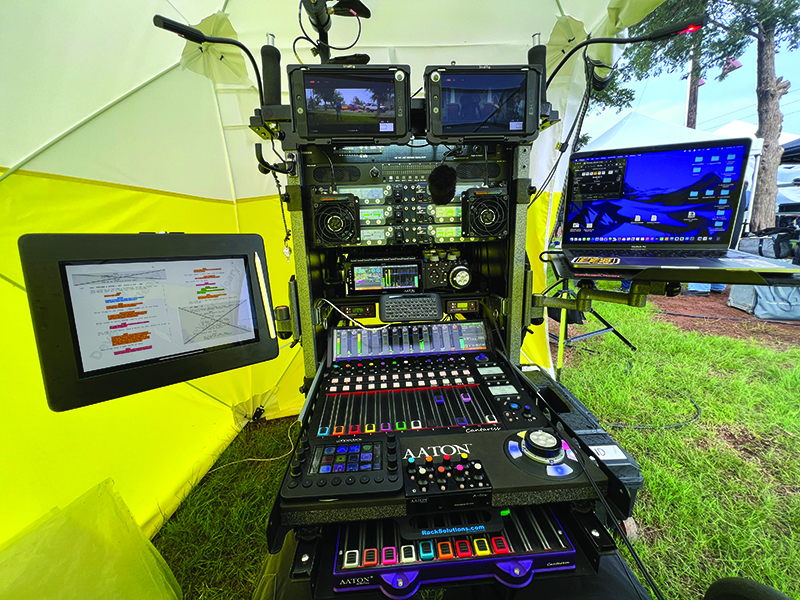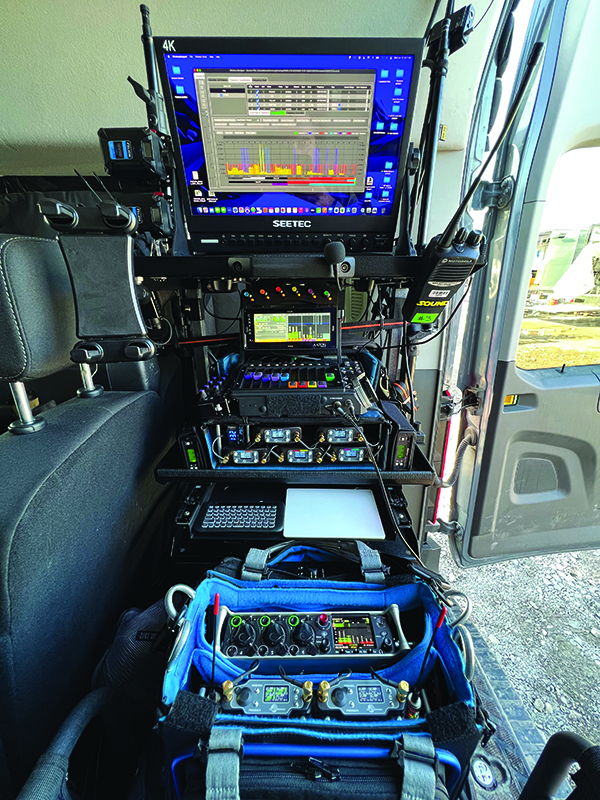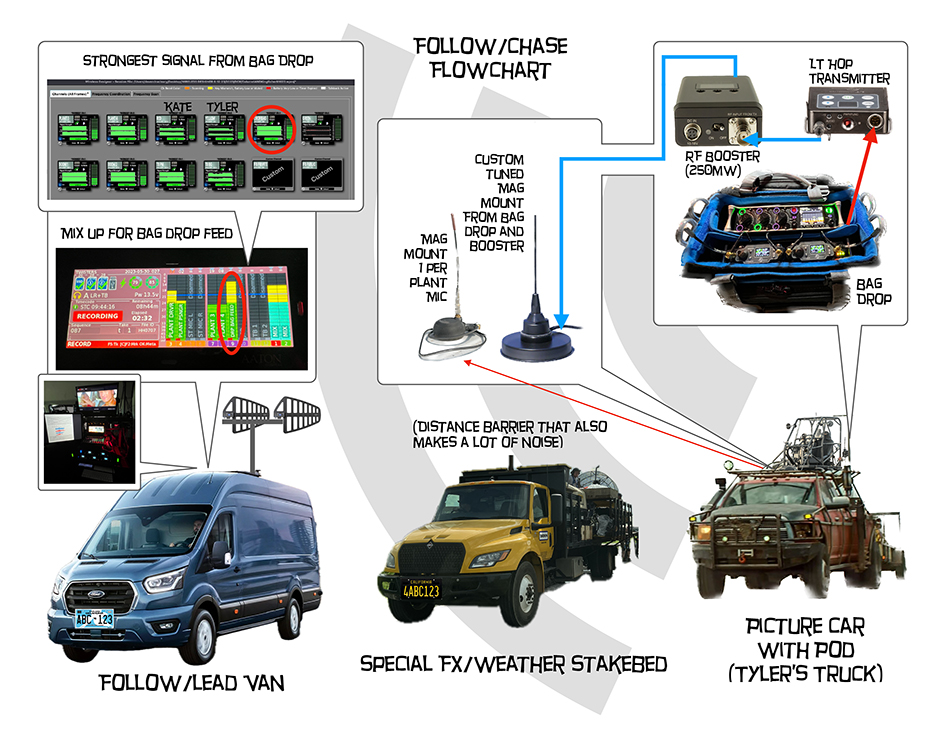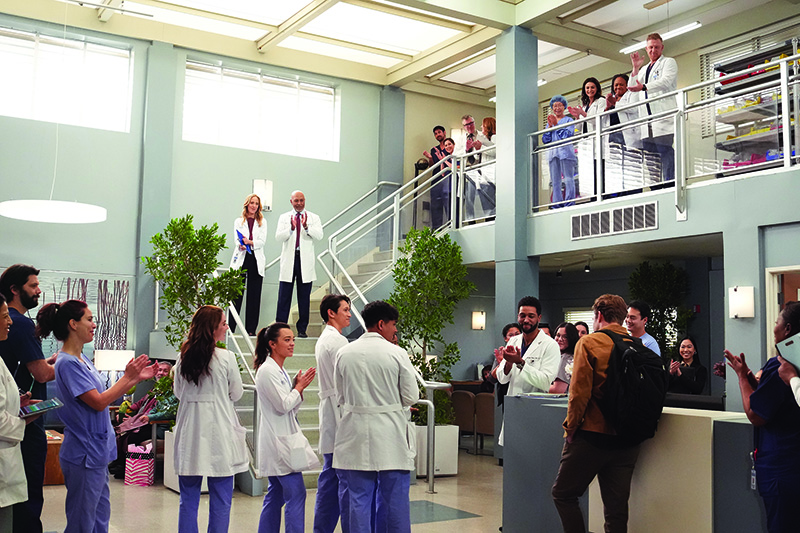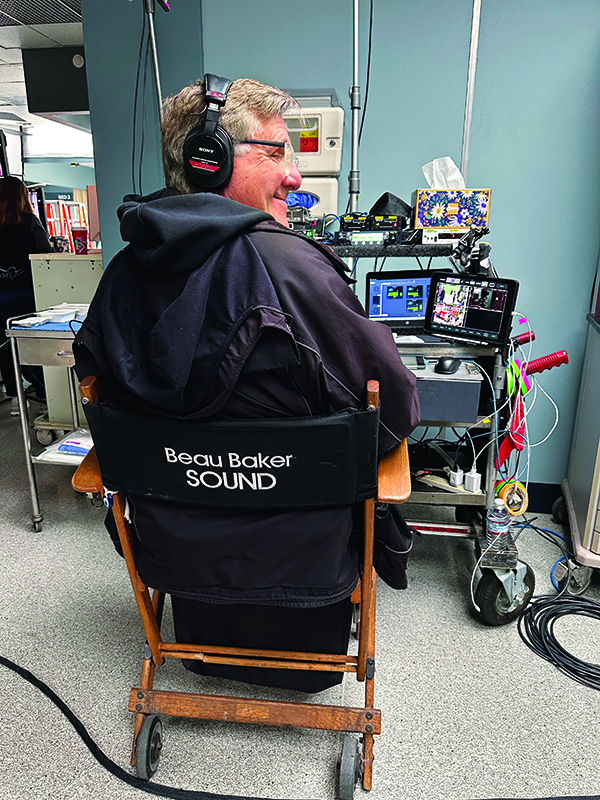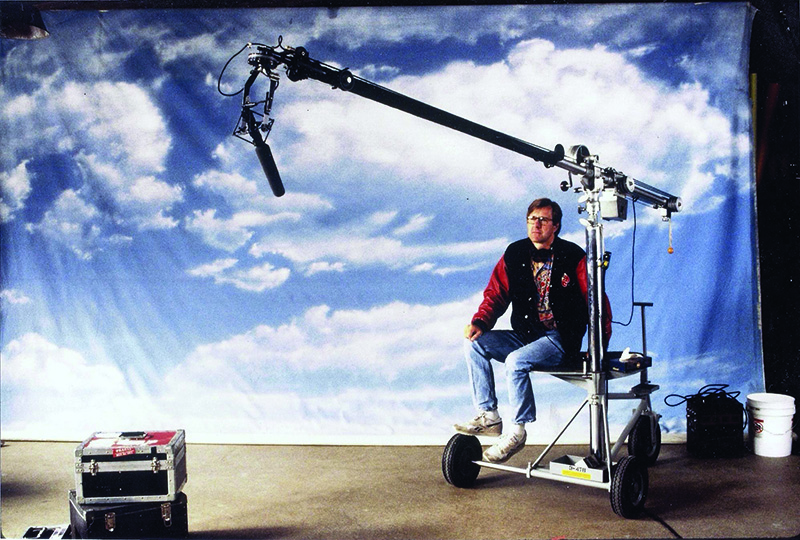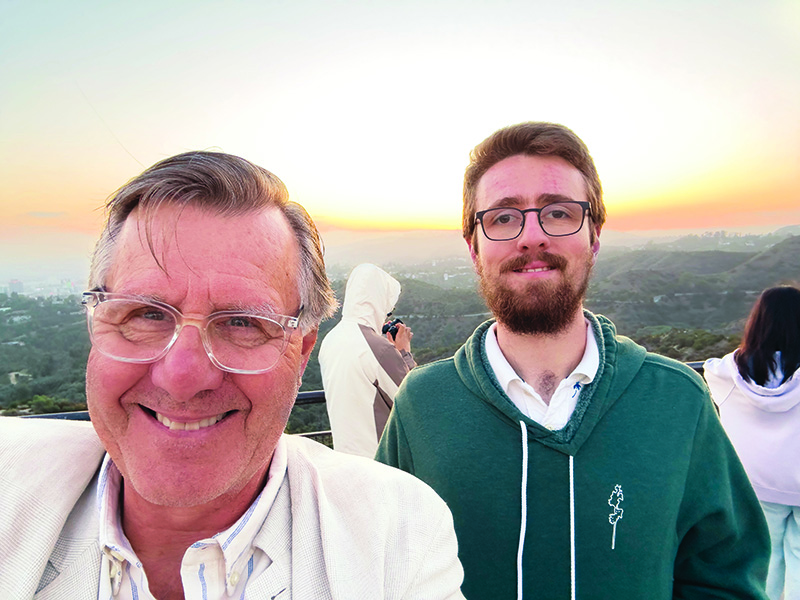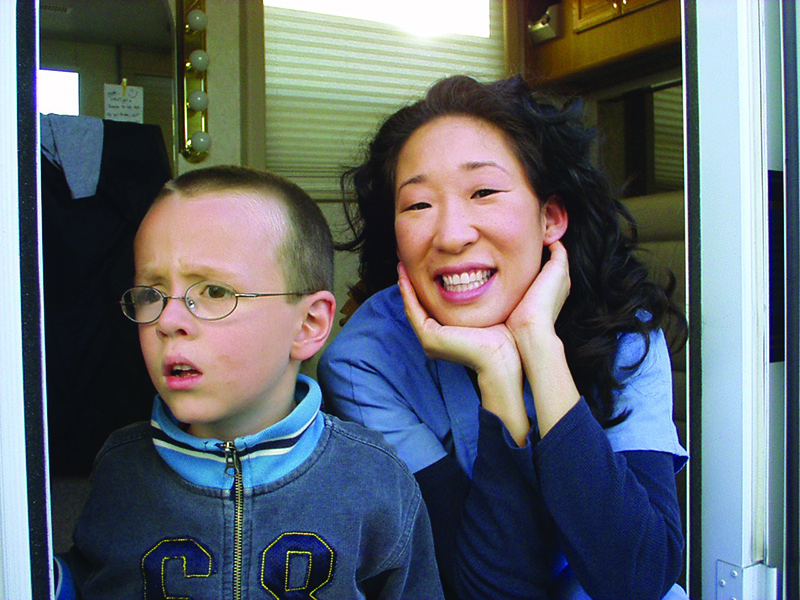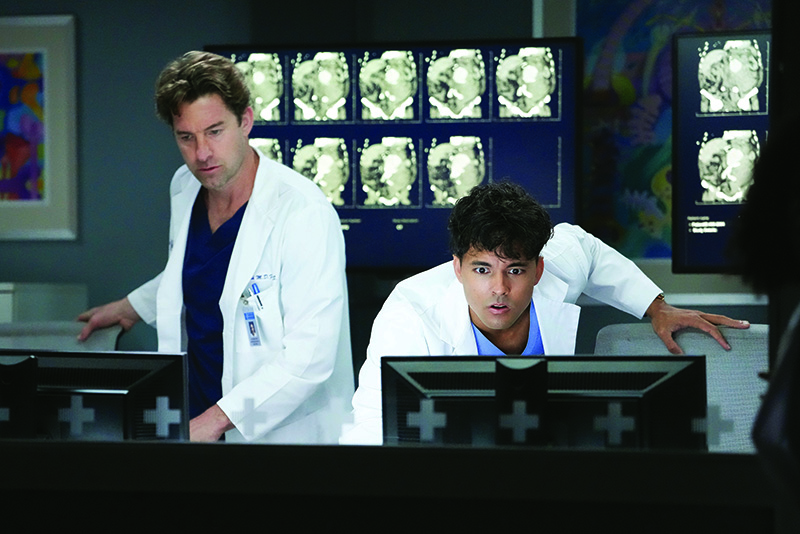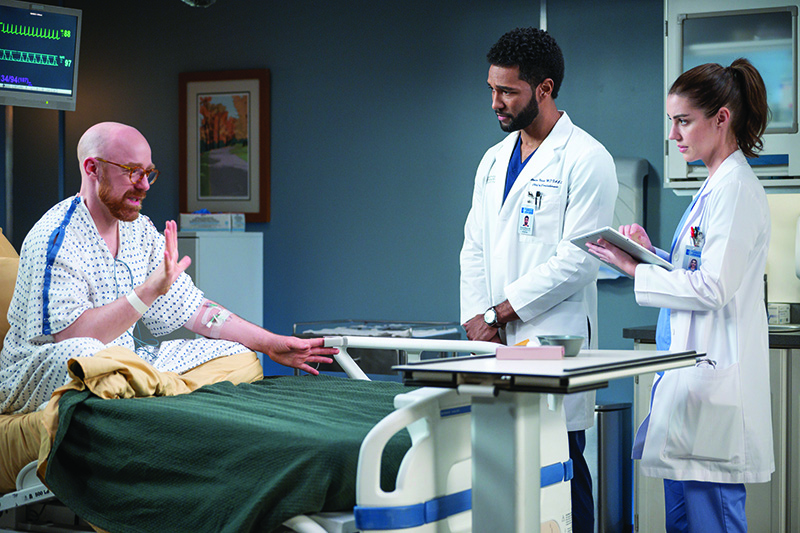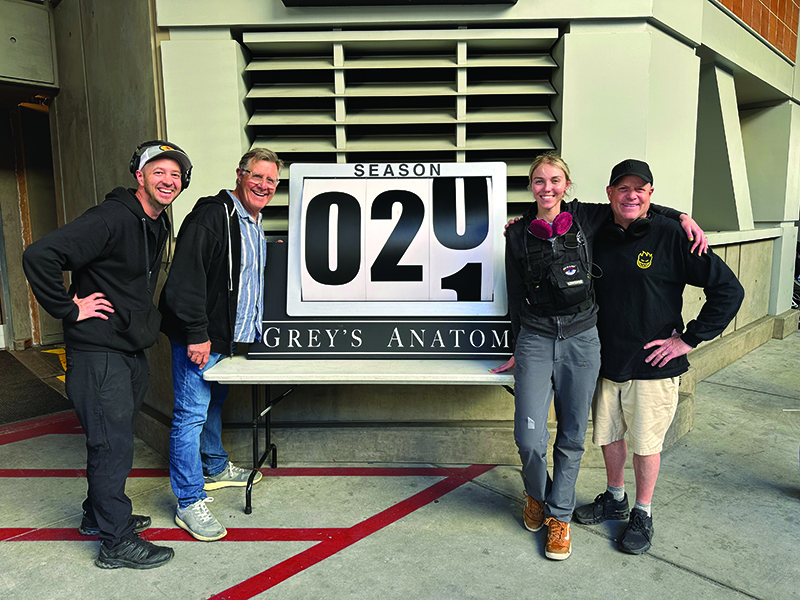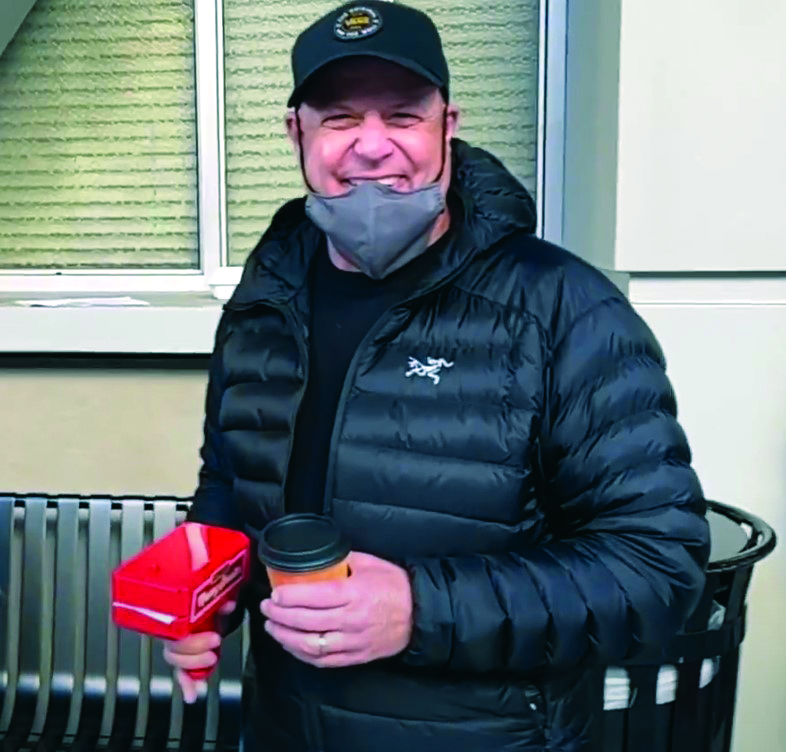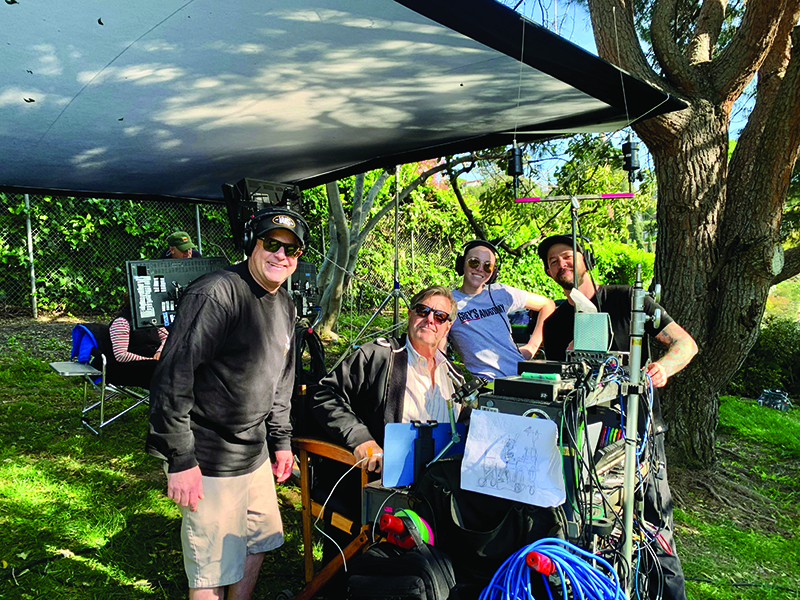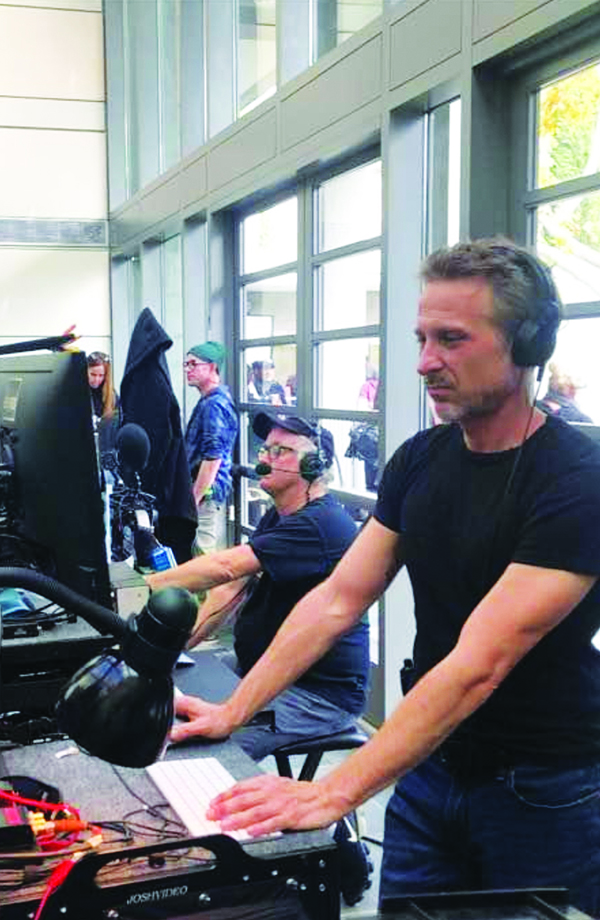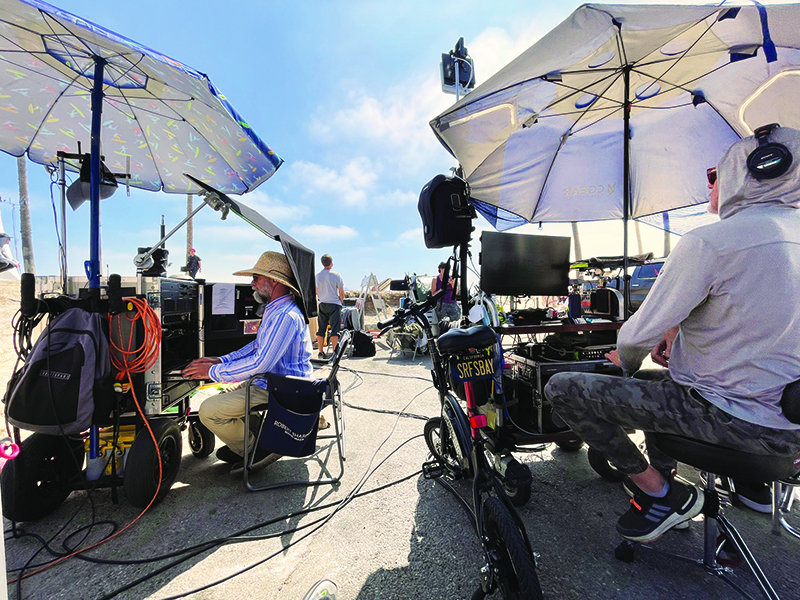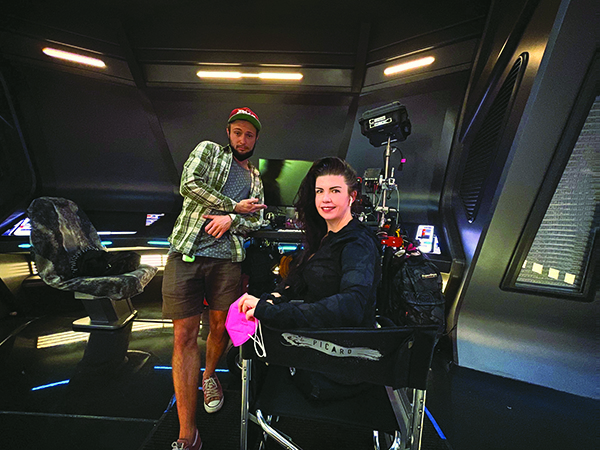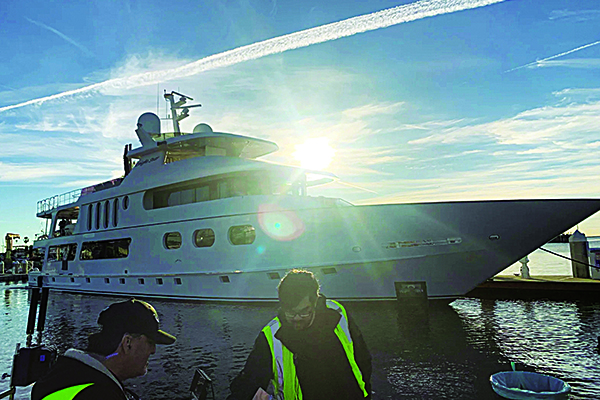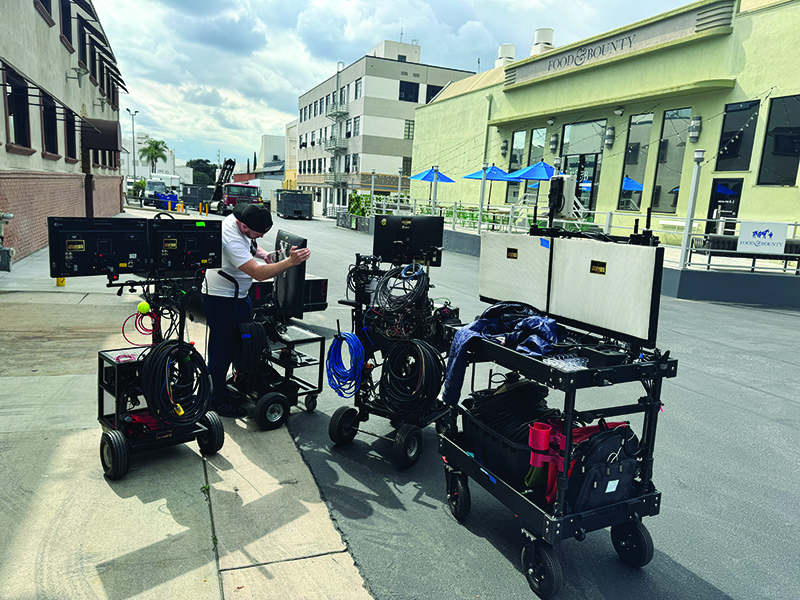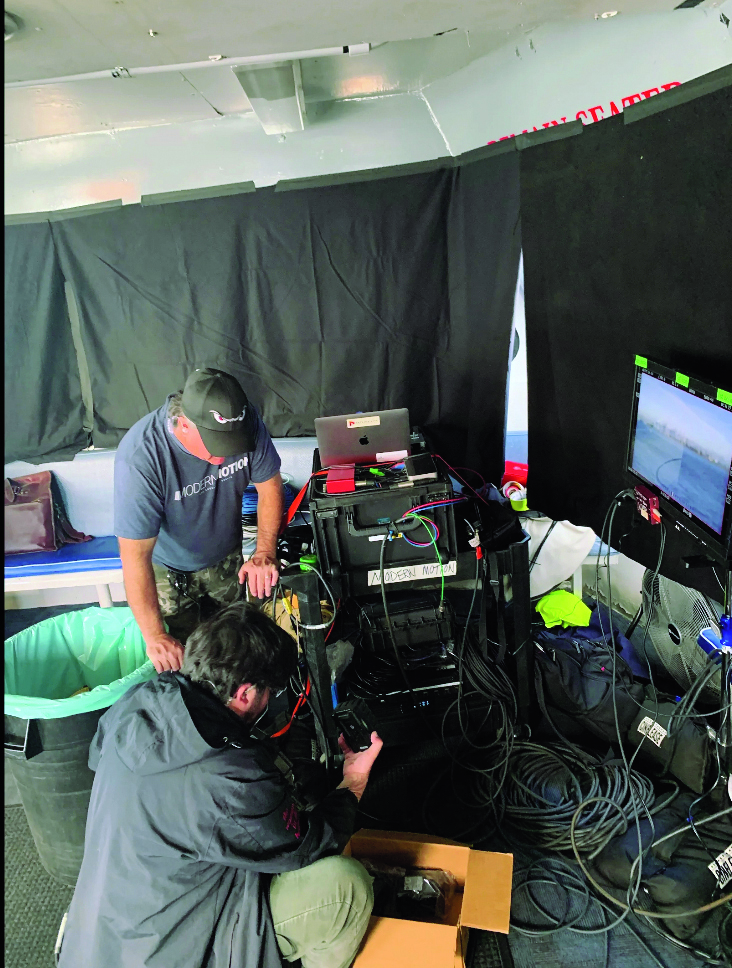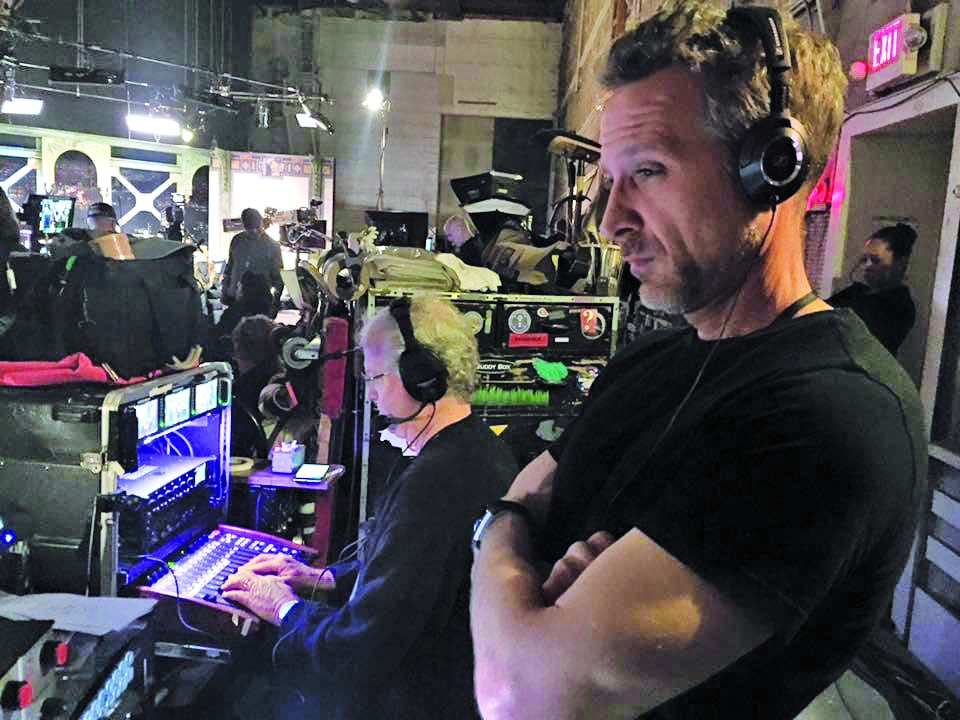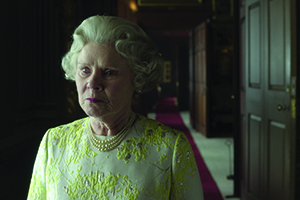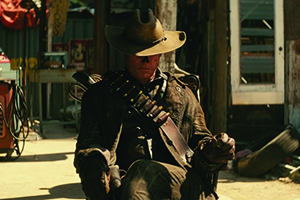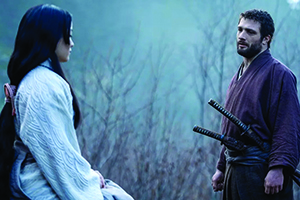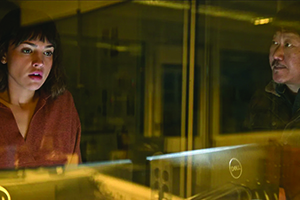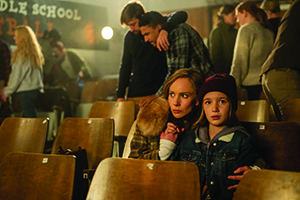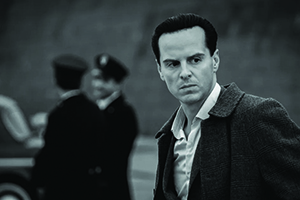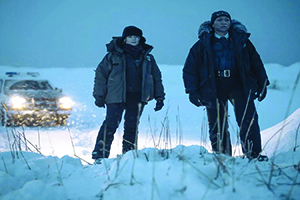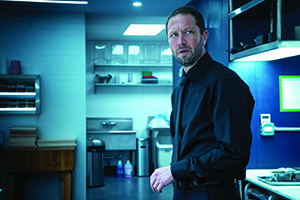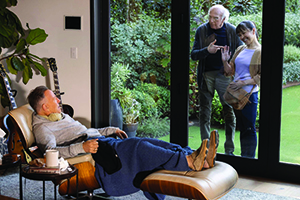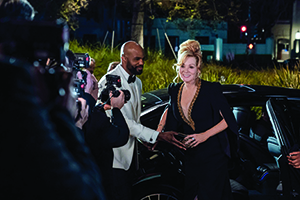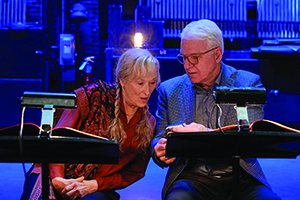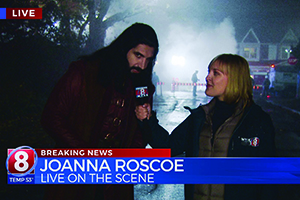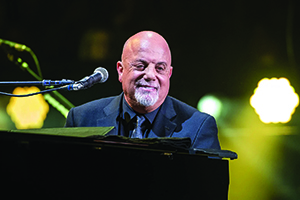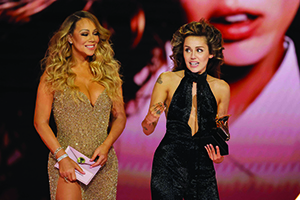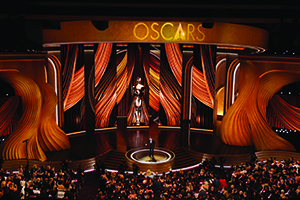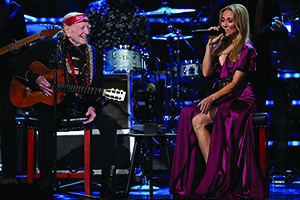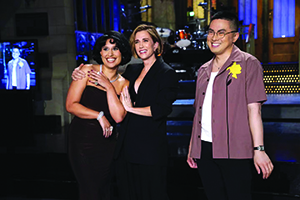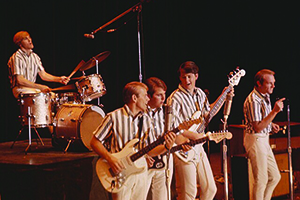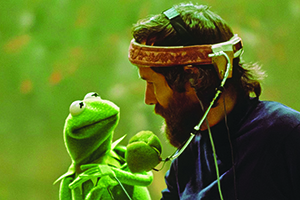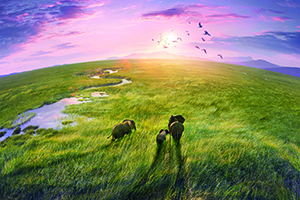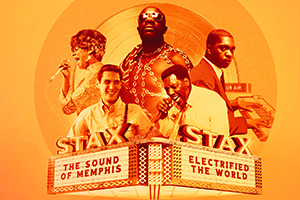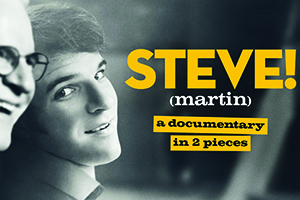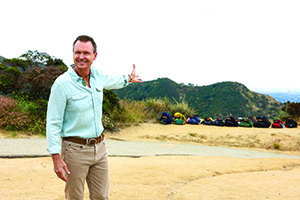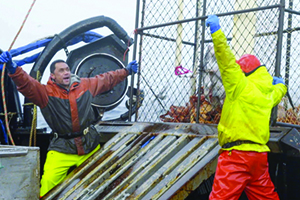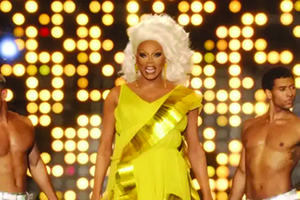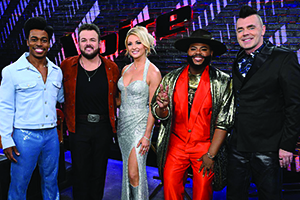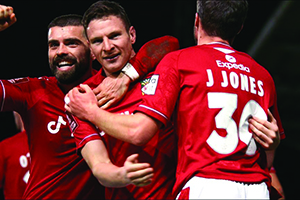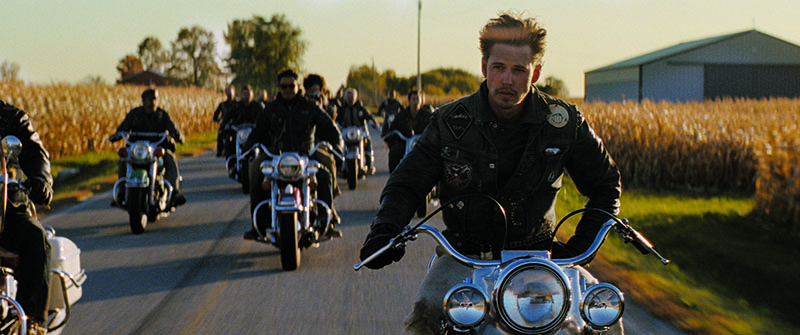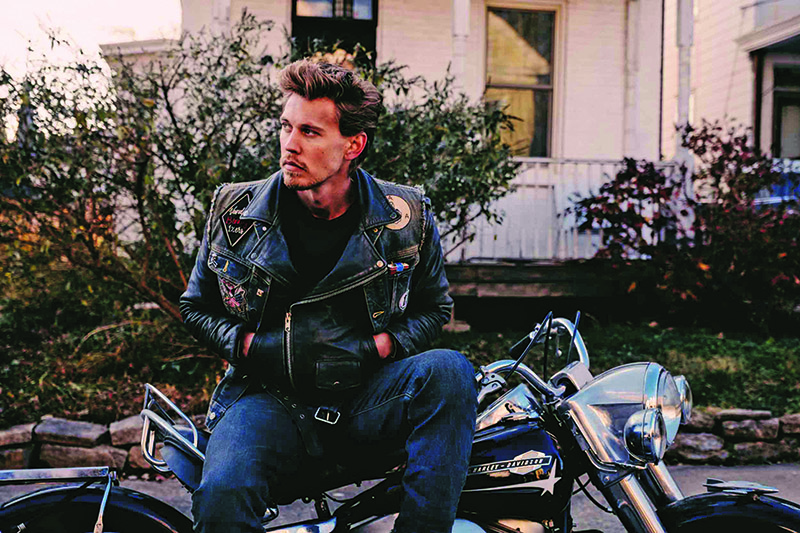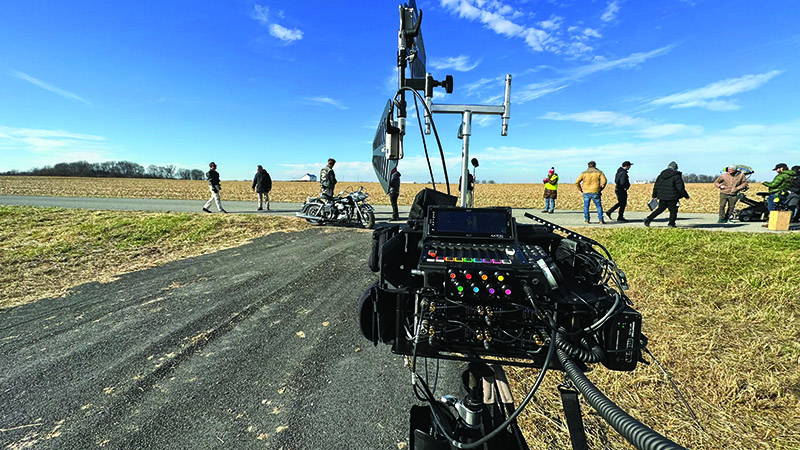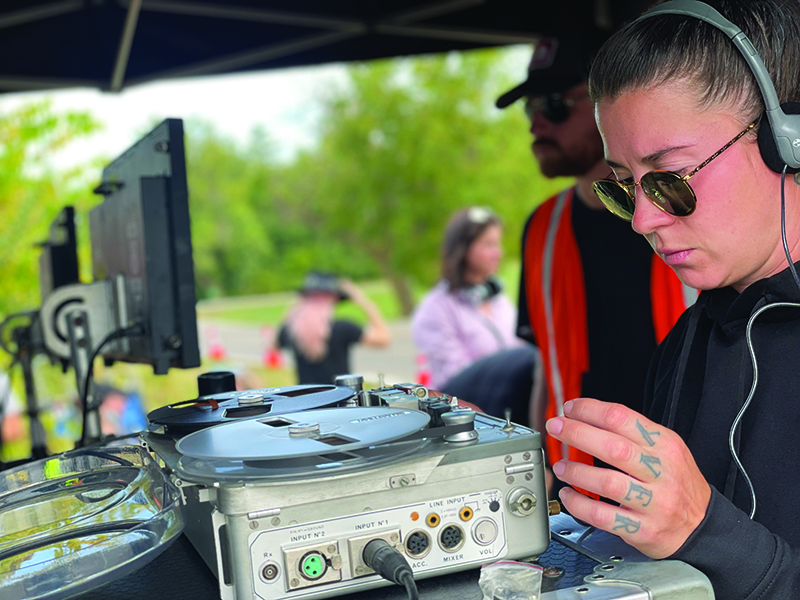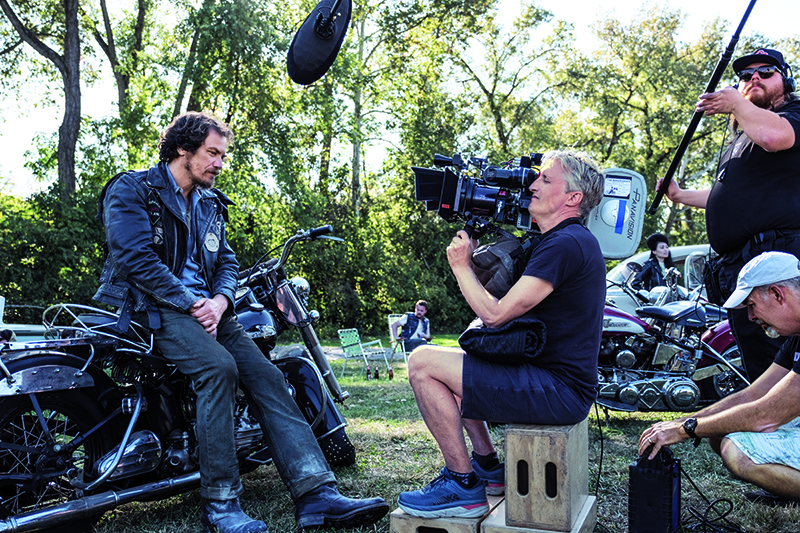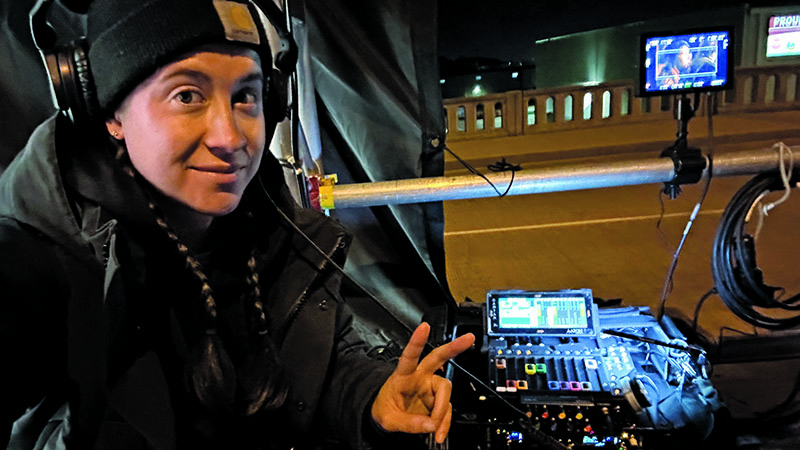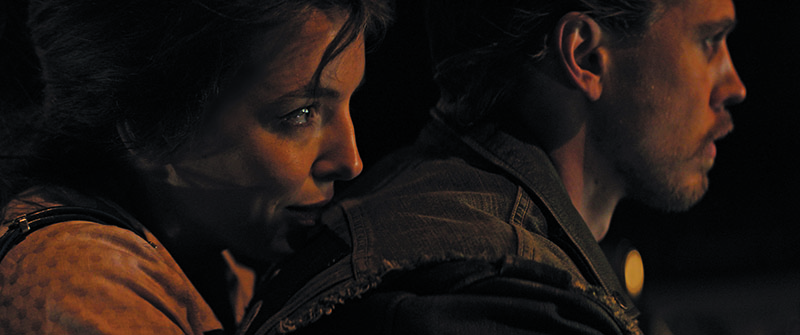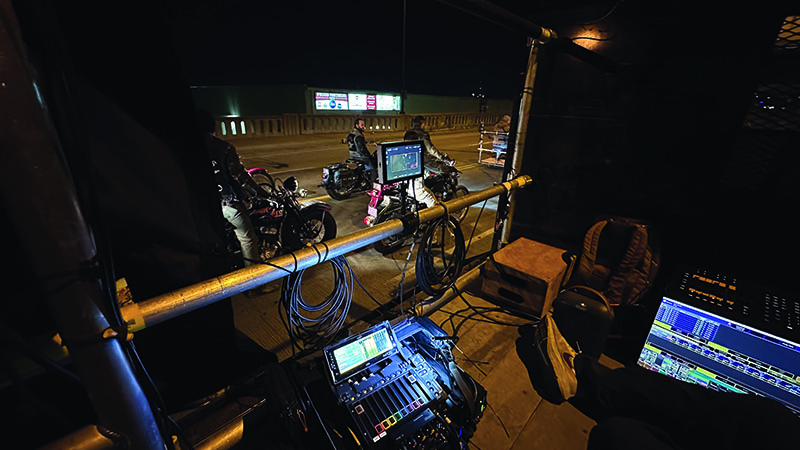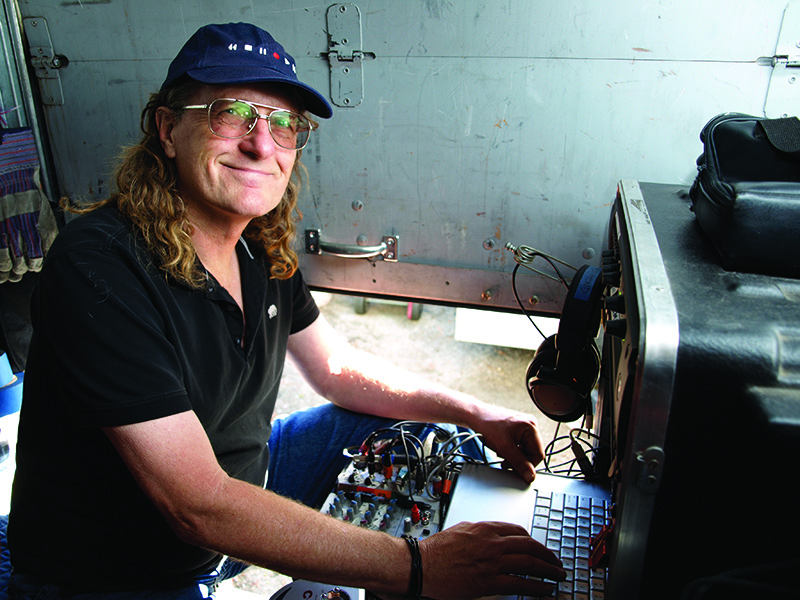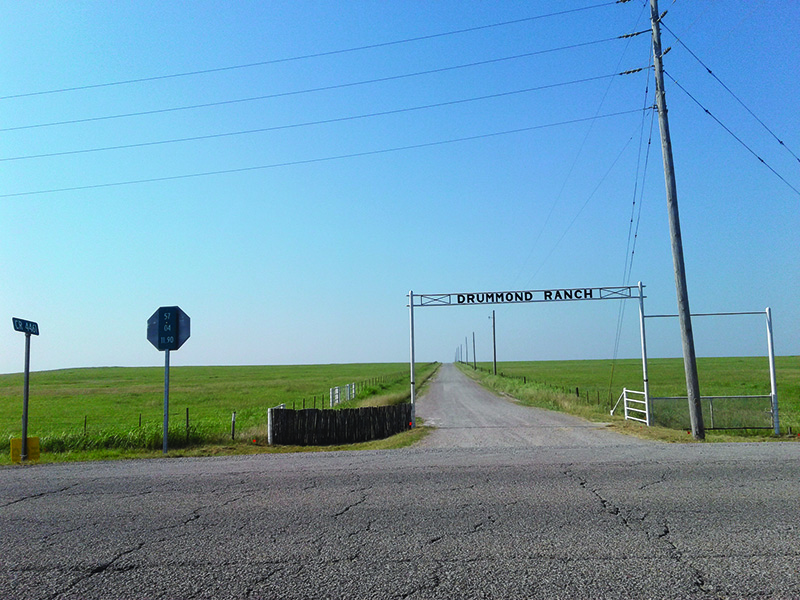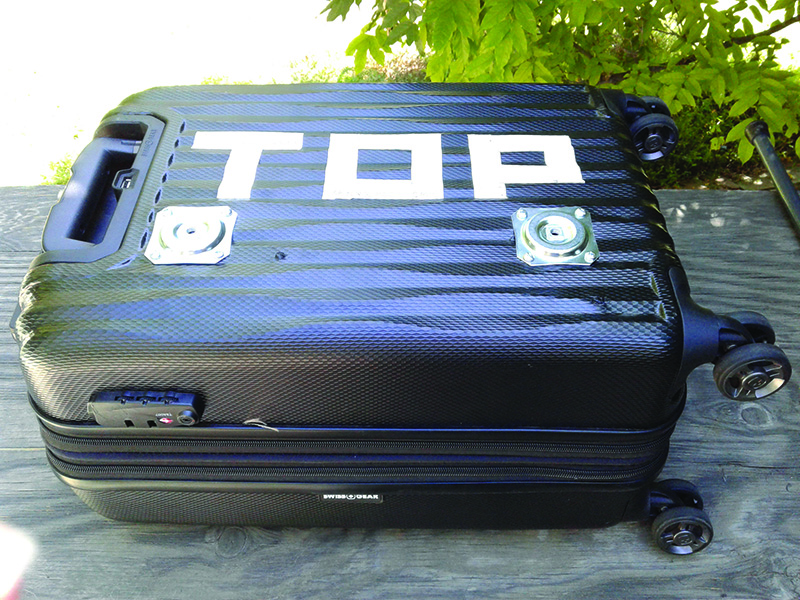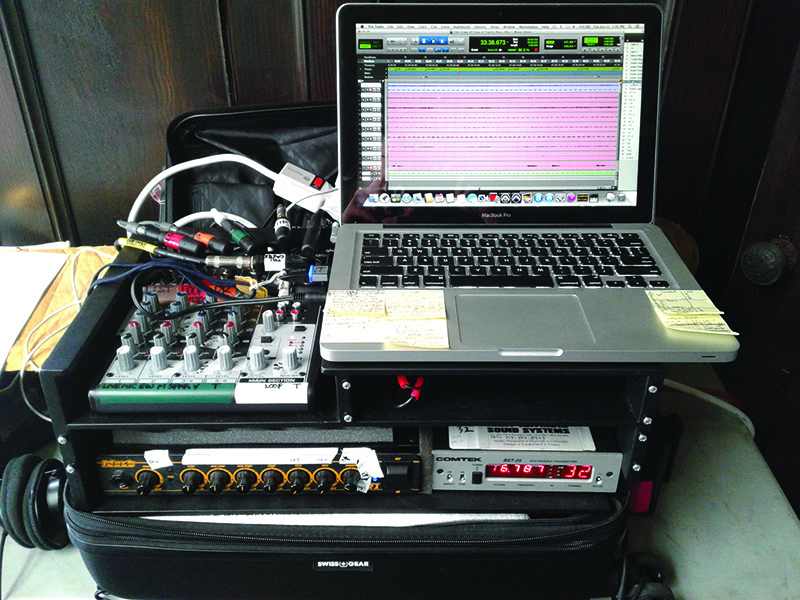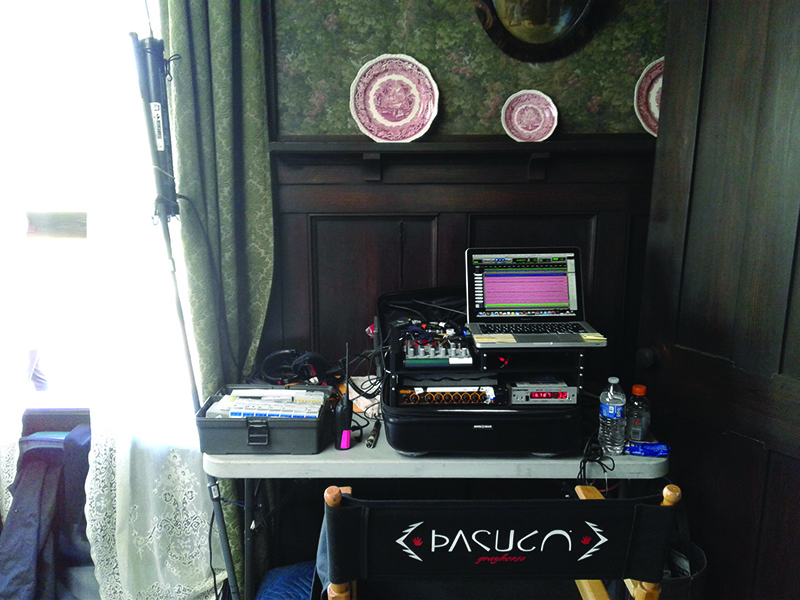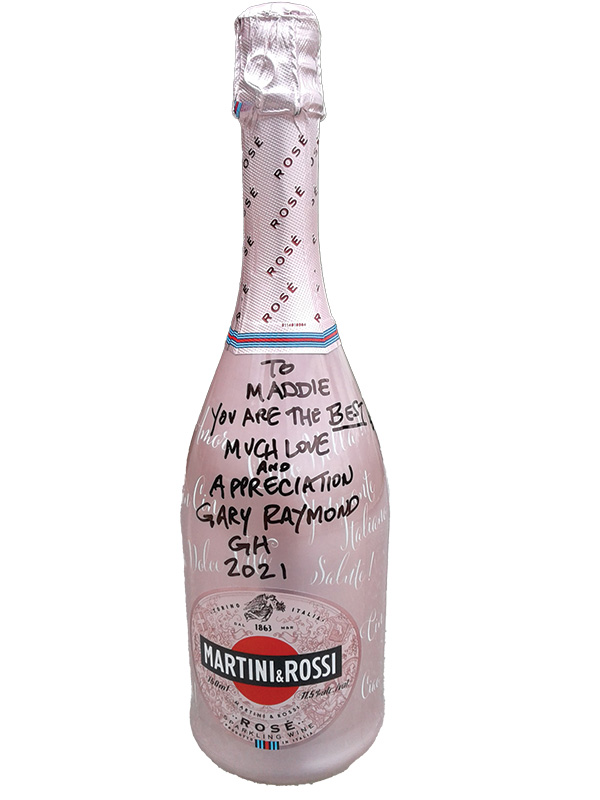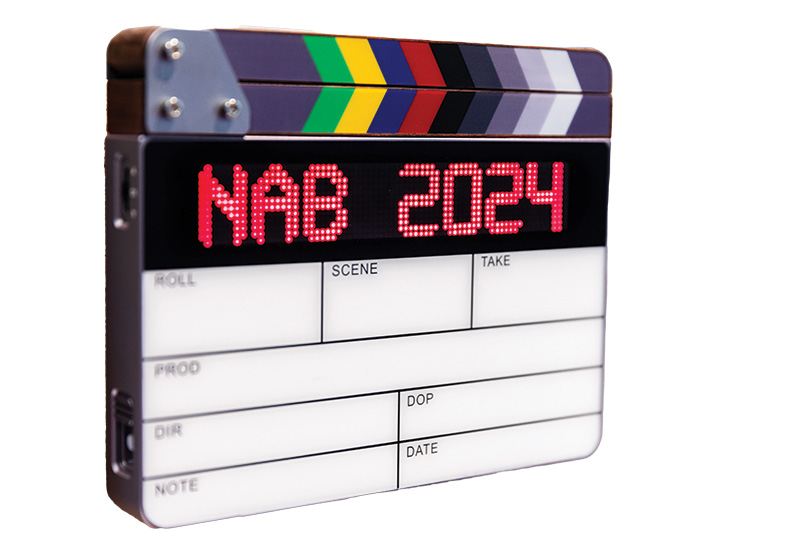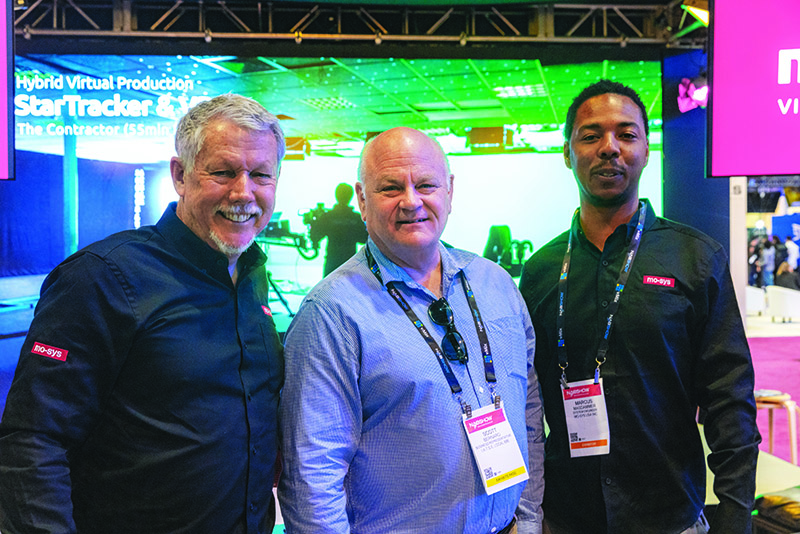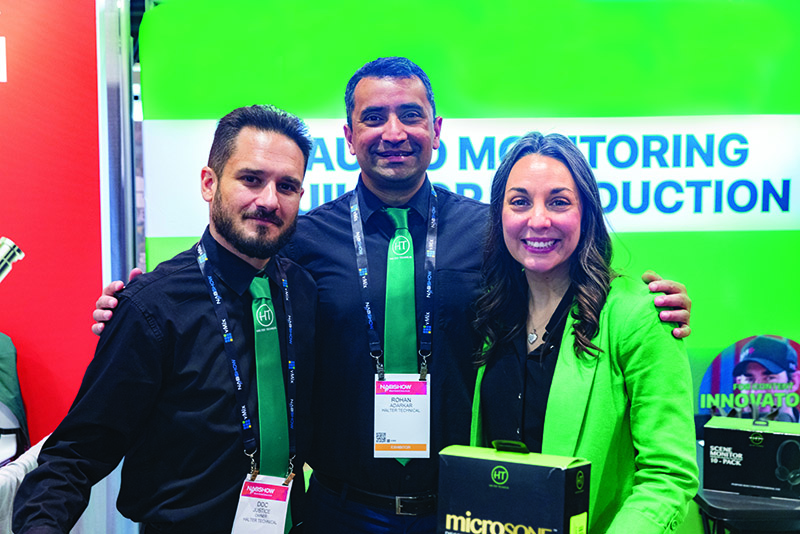by Ross Levy CAS
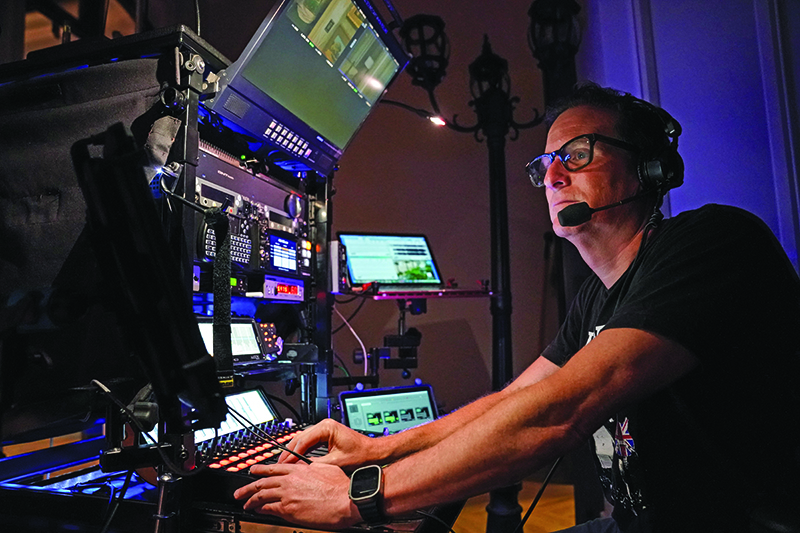
It was March 2023 and my historic run on NCIS: Los Angeles, thirteen years and over three hundred episodes, was finally coming to an end. The martini shot was complete and it was an official series wrap at Paramount Studios.
There were hugs all around as we said our goodbyes. I’m not going to lie; it was very emotional. I took a moment to reflect on such an amazing run with a strong sense of accomplishment. It dawned on me that these very sets will soon be gone and a new production will be moving in. I never dreamed I would be returning to these same stages on my very next show: Matlock.
I had the pleasure of working with actor Eric Christian Olsen for those thirteen years on NCIS: Los Angeles playing series regular, Marty Deeks. Eric is an amazing human on all levels and praised me and the sound team; Boom Operator Ben Wienert and Utility Sound Technician Jonathan “Jono” Hong, for the lack of ADR.
I was looking forward to working with Eric again on the new CBS series Matlock where he is an Executive Producer and coincidently, both shows are produced by CBS Studios. The pilot was shot in Toronto and the WGA and SAG strikes commenced soon after. As we all know, many new projects were shelved indefinitely due to the long negotiations. Fortunately, Matlock did not suffer that fate and was scheduled to start principal photography, March 2024.
Maximizing my workflow
The indefinite work stoppage during the strikes was a perfect time to focus on and maximize my workflow. The two areas that needed improvement were RF performance and a crew comms system. Dante is already integrated into my cart and I use Lectrosonics DSQD receivers. I wanted to build a Dante deploy mini-cart housing the DSQD’s to work close to the set to eliminate long antenna cable runs and antenna gain. The goal was to pad down the powered/filtered Lectrosonics ALP690 antennas to -6 Db and run the DBSM TX at 25 MW to mitigate RF noise. The deploy cart was an easy build since I already owned most of the equipment. I just needed a custom cage with a patch bay that I could drop on my PSC Euro cart. The cage lives on the Euro cart, powered by the Eurostar LiFe DC power distribution. I had Ron Meyer at PSC to modify one DC output to 6A which powers the cage. Inside the cage, a PSC Triple Play II BDS distro powers three DSQD’s, a Comtek BST-75, a Lectrosonics SMV 944 band TX, Cisco Business 250 series managed Gigabit Switch, and Lectrosonics DNTBOB88.
The Dante cage can easily be remoted and powered by a PSC pelican LiFe, or plugged into AC if needed. I already owned a Lectrosonics DNTBOB88 Analog to Dante box that wasn’t getting much use, and I thought it would be slick to build the DNTBOB88 into the cage. The BOB has up to 8 Dante I/O. This workflow came in clutch on Matlock (more on this later).
Matlock is set in New York City but primarily shot on stages at Paramount Studios. We go on location roughly one day per episode. The Jacobson Moore Law firm set where Madeline Matlock works, is built up to the fire lanes on the stage and divided by clear glass walls separating the rooms. After a couple days filming, I learned very quickly there’s just no place on set to hide without having to move after most setups.
The Dante cart simplified this. I found my spots on stage that were out of the shot and deployed the Dante cart up to three hundred feet away. Running the CAT5e cable on the outside of the set ensured it would never be in the shot. I also added the Accsoon Cineview SE 2.4/5.8 MHz wireless video system eliminating the need to be tethered to the Non Record Video Assist cart.
Next came the moment to shine! We were on location at a park, doubling as New York’s famous Central Park. It was an easy day on the call sheet, just a couple scenes near the water. I positioned my cart on a hill overlooking the set avoiding a flight of stairs. The scene was an actor seated on a park bench on the phone. “Easy,” I thought to myself. Seconds before we rolled, the first AD asked, “Do you have earwigs? The Director would like to read off-camera dialog from video village.” I responded, “No problem!” My current recorder, the Aaton Cantar X3 equipped with Dante+ and auxiliary options, made this a breeze. I assigned the Director’s Lav ISO (Dante input 16) to Sub Group 2 (S2). I assigned S2 to the Dante Output BOB4 at the deployed Dante cart for the earwig base station transmitter. Lastly, I assigned S2 to the top Slider 9 on the X3 for level control. The last hurdle was range. The Director was at video village, a good two hundred fifty feet away from the actor. I was behind the Director about fifty feet. The Dante cart was three hundred feet from me. I used 100-foot XLR out of patchbay (BOB4) to get the earwig base station close to the actor. It worked great!
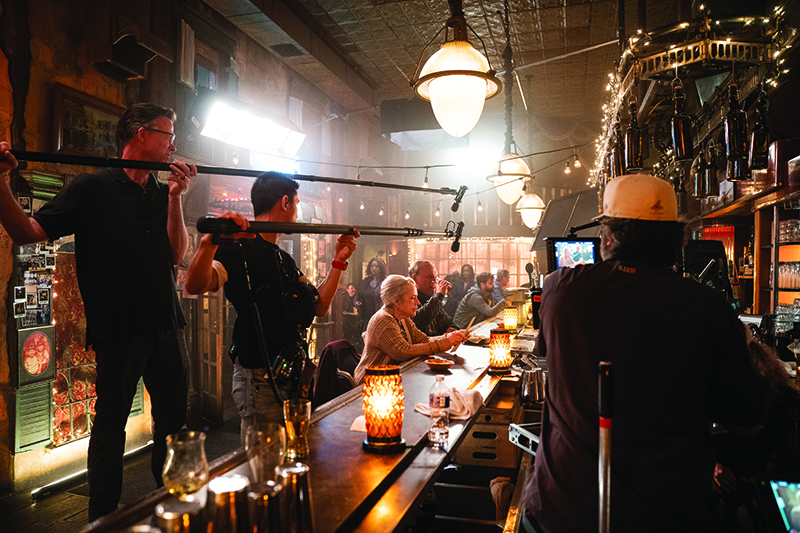
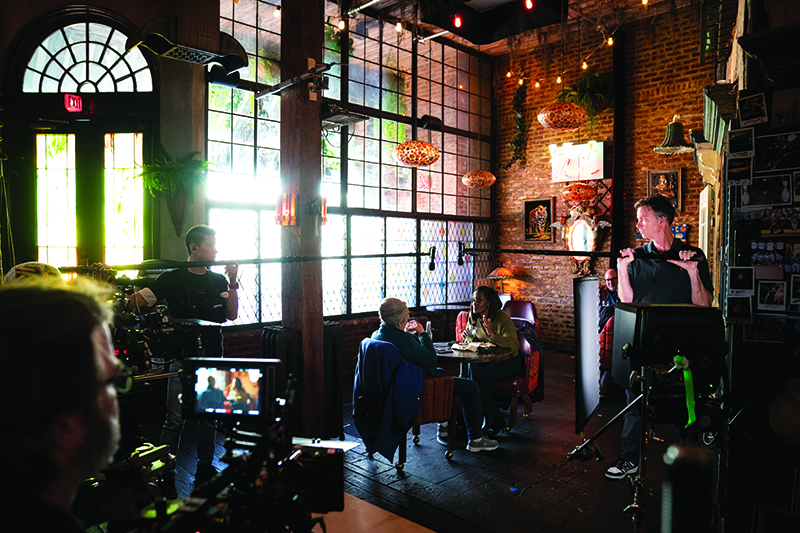
Having the flexibility of eight assignable Dante outputs works great for playback or VOG. I haven’t used the BOB Dante inputs, but they would be slick if the Director wants to hear video playback in his Comteks/IFB, as an example.
GMRS radio comms
With the limited UHF RF spectrum availability for talent wireless, I wanted to avoid using those coveted frequencies for comms. Lower end FRS (Family Radio Service) radios are an option yielding mediocre results. I needed better range, fully programmable and an SMA antenna radio. GMRS (Global Mobile Radio Service) checked all the boxes. I settled on the BAOFENG UV-82C dual band radio. This model is FCC compliant operating in the 462/467 MHz and VHF 136-164 MHz frequency bands. An FCC GMRS license was required, which will cost $35 for ten years and the license was easy after navigating the archaic FCC website. The UV-82C is programmed with Chirp software and proprietary USB programming cable.
I uploaded twenty legal GMRS and eleven VHF frequencies for my region. Finding the best frequency for your area to avoid ham radio repeaters is essential. Range performance covering Stages 8 and 9 at Paramount was impressive and also penetrated exterior stage walls to reach restrooms and most importantly, Craft Service.
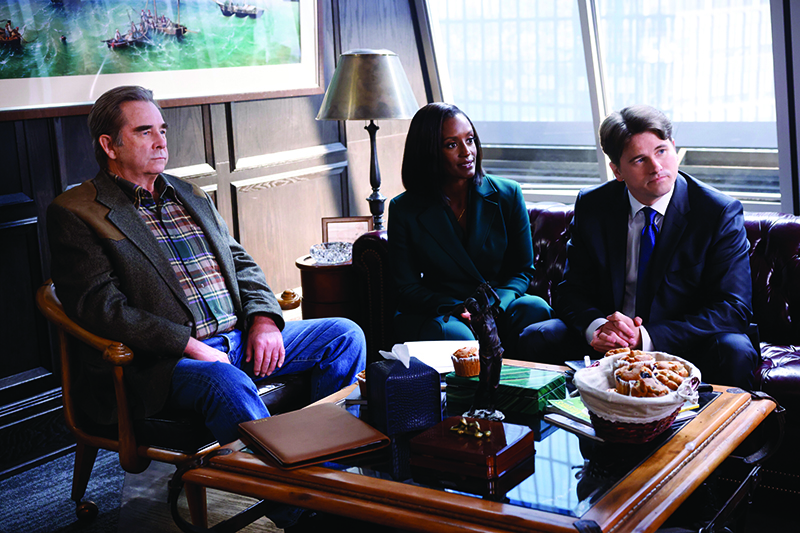
The setup; the GMRS radio installed on the sound cart. Line out of the radio into the L3 (line input 3) of the X3. I created Sub Group (S15) with L3 and assigned S15 to slider one of the X3 for level control. My crew monitors S15, mix track and PL with Lectrosonics rla’s in the 944 MHz band. The cheap PTT surveillance mic kits included with the radios sound great. I cut off the earpiece since they monitor from the rla. A Nagoya UT-72 magnetic mount antenna with SMA adapter for the sound cart GMRS radio increased range.
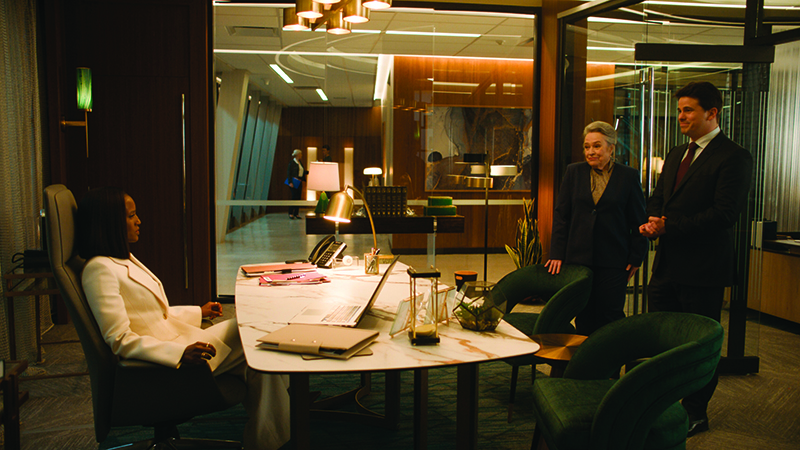
My team
I have worked with Ben and Jono close to one hundred episodes on NCIS: LA so any discussion about a setup is pretty quick—we all share the same philosophy. Production sound is a collaborative process to figure out the right approach for success. Matlock comes from the brilliant mind of Jennie Snyder Urman and has her signature wall-to-wall dialog, so Ben has very little time off from the law firm set. Reflection and shadows are a constant challenge and it’s common to run two booms to eliminate crossing lights or to hide reflections. It can be tricky, but we always come up with a creative way to get what we need. We do very little ADR on this show and everyone seems very happy. Ben’s ability to negotiate, and his people skills have been top notch. Jono takes care of wiring talent so Ben can watch the set. The actors trust Jono’s wiring skills, which is a valuable aspect of capturing good sound. Jono not only runs point on the wires but keeps up with multiple wardrobe changes during the day. Jono also switches microphones when needed, deals with Comteks, second boom, and laying carpets.
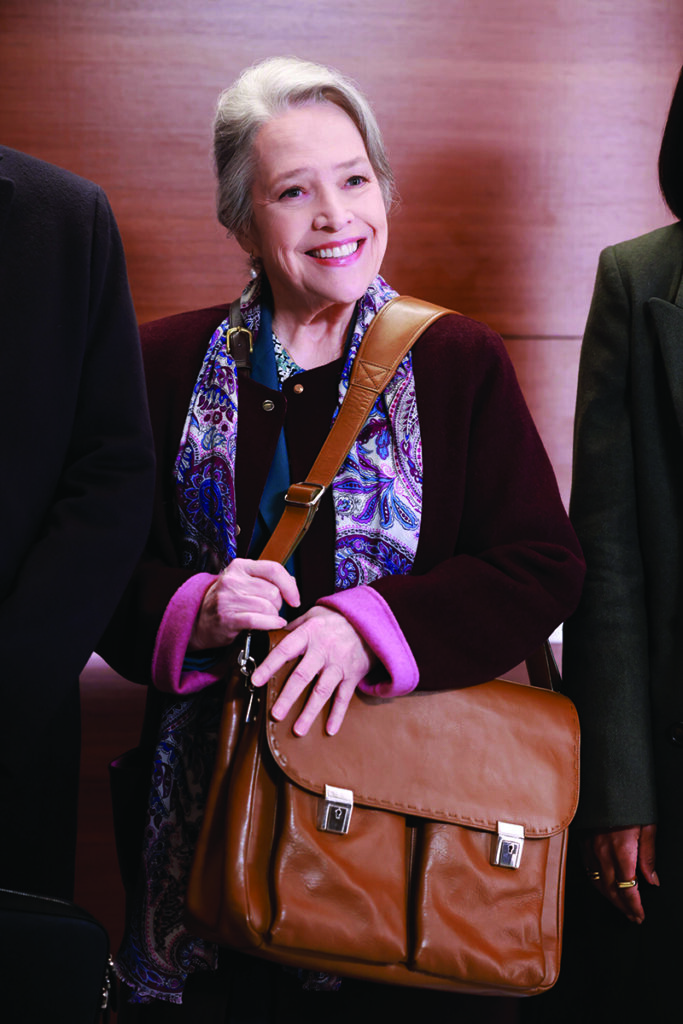
Photo: Sonja Flemming/CBS ©2024 CBS Broadcasting
The Sanken COS-11D does most of the heavy lifting. We use DPA 6060 to poke through button holes and DPA4097 and Eastwind Audio TX-Flex Omni Gooseneck microphones for courtroom plants, the Sennheiser MKH50 for interiors, and Sennheiser MKH60 for exteriors.
Matlock has been one of those dream jobs. It’s been an honor and an aspiration come true to work on such a well-written, produced, and acted one-hour drama. It has been a true pleasure and privilege to work with Kathy Bates and the entire cast. The responsibility of capturing such emotional and dynamic performances is what keeps my passion growing as a Production Sound Mixer.
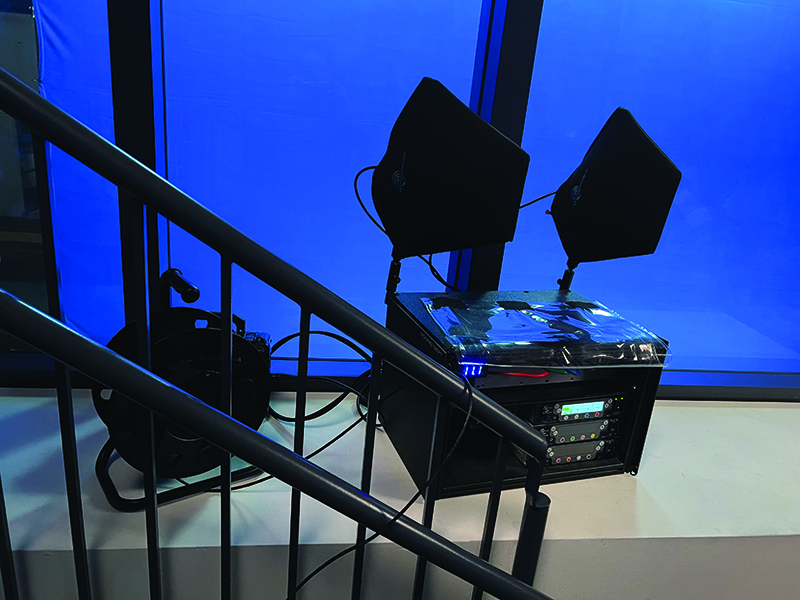
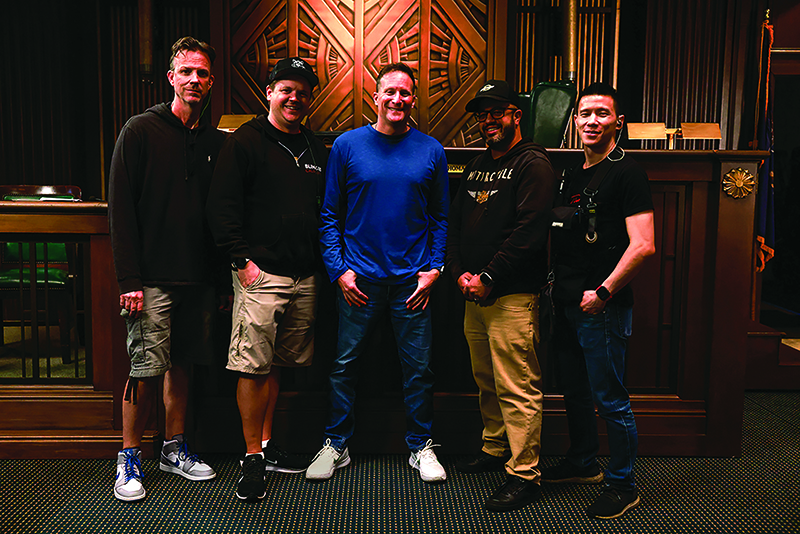
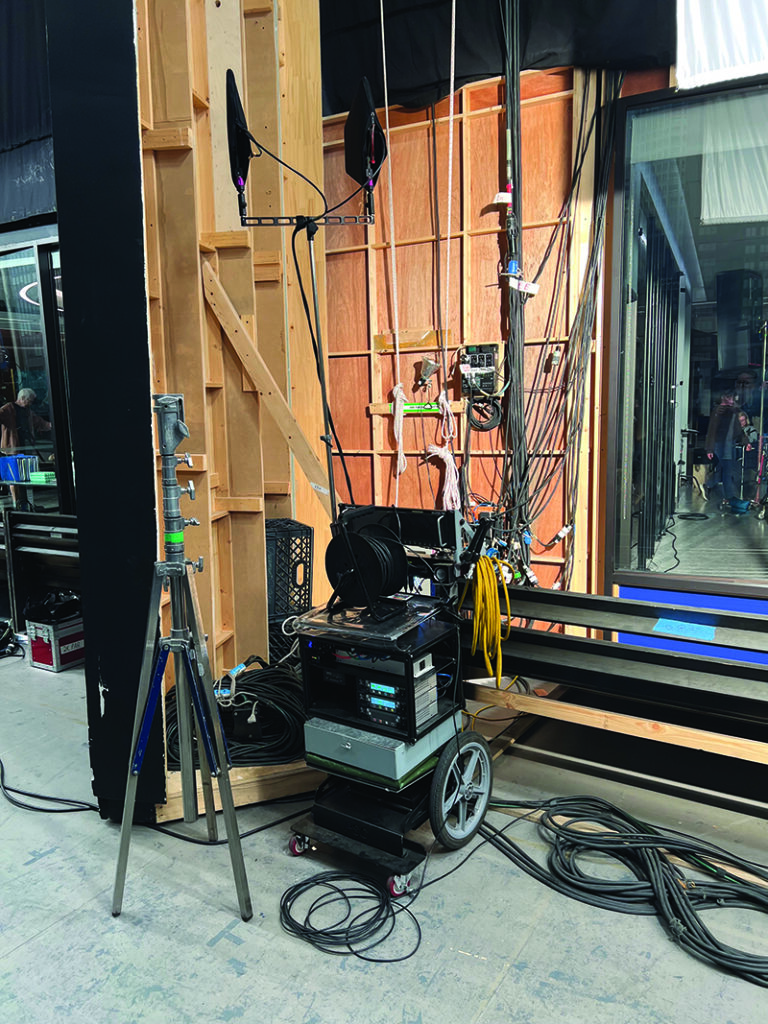
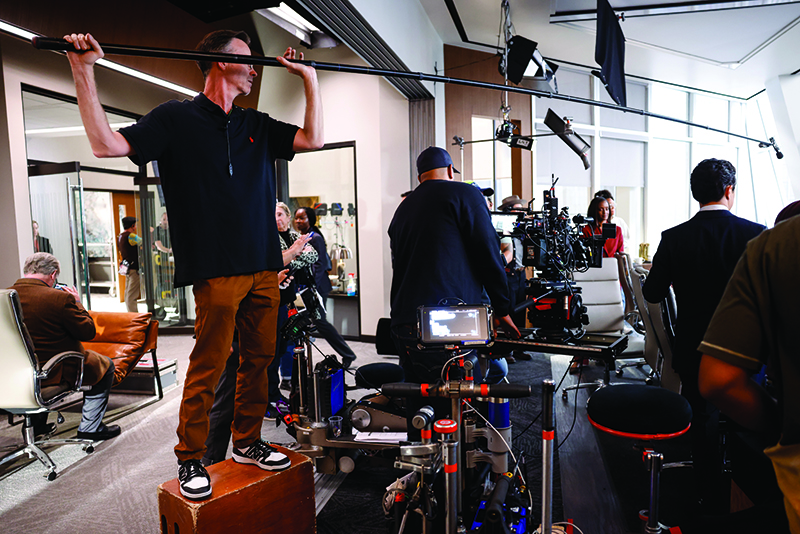
Photo: Sonja Flemming/CBS ©2024 CBS Broadcasting
